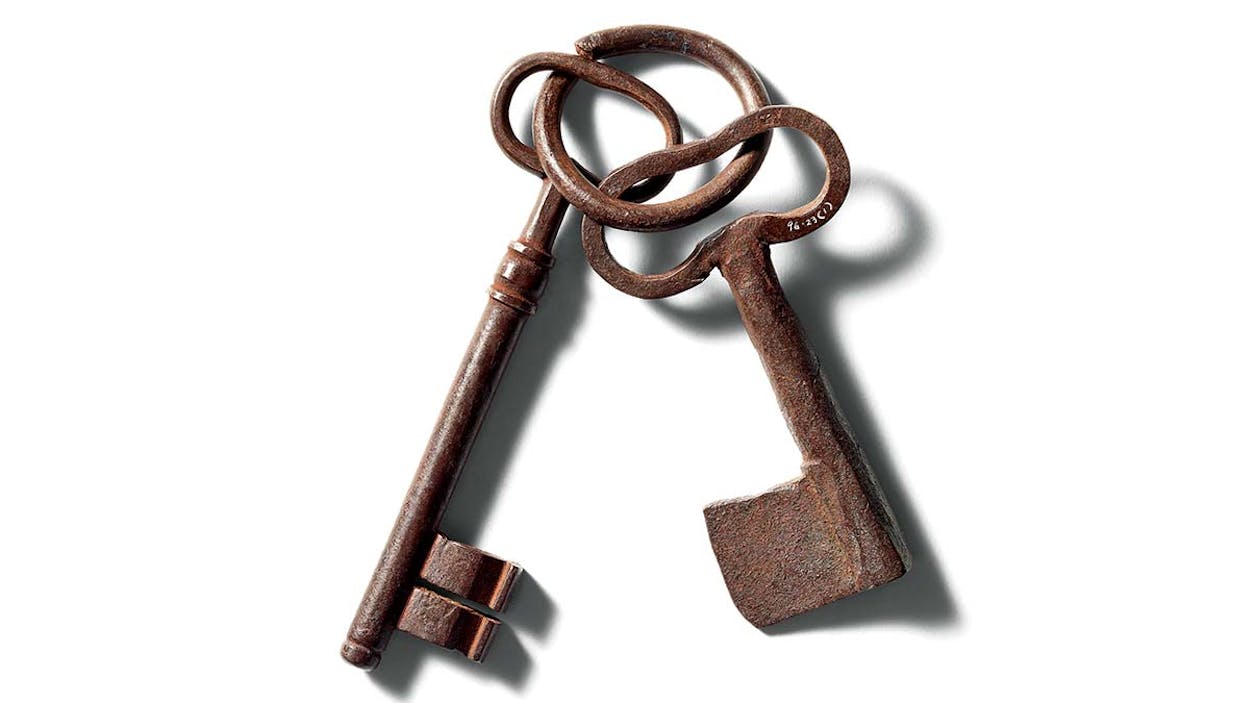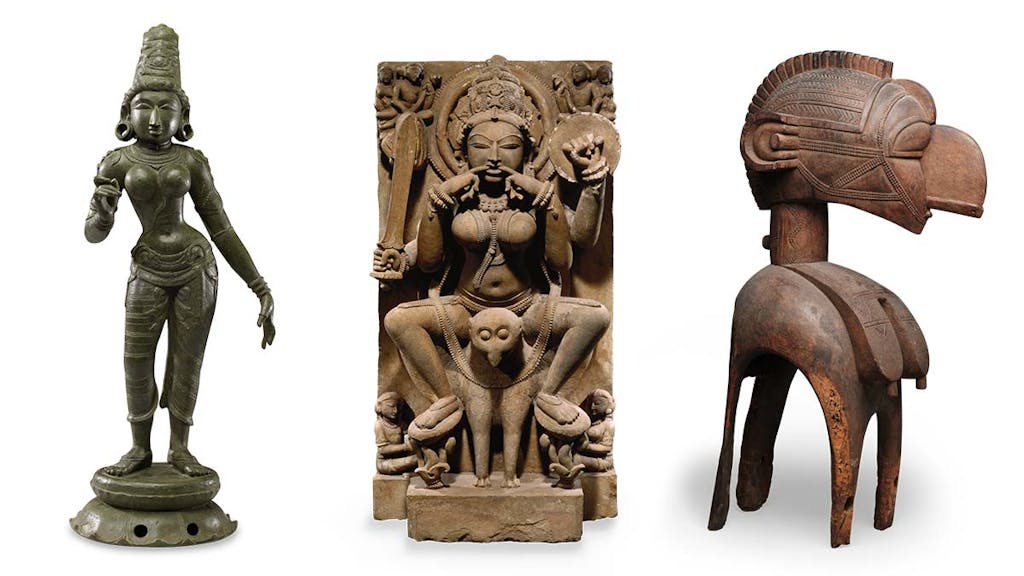Why go to a museum these days? The digital age, with its high-res images and thumbnail galleries, has put more masterpieces at our fingertips than one could ever hope to see in person in ten lifetimes. Within a few clicks you can be riffling through the 31,287 photographs stockpiled by the Museum of Fine Arts, Houston. Or zooming in on 284 of the Italian Old Master drawings tucked away in the Blanton Museum of Art’s temperature-controlled coffers. You can even “turn the pages” of the Harry Ransom Center’s Gutenberg Bible.
But there’s something about being within sneezing distance of the three-dimensional totems of our shared history that can’t be replicated. So why go to a museum? For the physical, concrete experience that reminds us who we are—in space, in time, and in relation to others. Each work that we stand in front of was crafted, sculpted, whittled, or otherwise fashioned by someone who either walked this earth many moons before us or perhaps has interpreted a cultural moment in an illuminatingly different way than we have. We go to see but also to nudge ourselves into thought. We go to find a little magic, a moment of self-forgetfulness or of transport in the presence of something lasting.
Given the insta-malaise of our times, the year’s fretful headlines, and a whiplash-inducing election season, we decided to go in search of this magic ourselves. We reached out to sixteen of the state’s largest museums with permanent collections and presented their curators with a challenge: to distill their sizable holdings down to a handful of items that best illustrate five categories—legacy, ingenuity, environment, community, and craft—of the human experience. We left the definition of these categories open to interpretation, asking each curator to surprise and persuade us with his or her selections.
What they came back with is a delightful hodgepodge of more than eighty objects that represent the must-see cultural holdings in our state, a collective inheritance of treasures that’s equal parts edifying and inspiring. We distilled their submissions even further to the selection that appears here. Peruse them, stare at them, think on them—and then go see them for yourself.

Legacy
To create a mark, to bequeath an object or an idea, to pass down one’s values—a legacy is, in many ways, about what’s imperishable. These items expand on intersecting notions of prestige, power, honor, and heritage, reminding us of things lost and gained.

The Battle of San Jacinto Diorama
(2015)
The Bryan Museum
Galveston
“This diorama, with 1,200 hand-painted miniature soldiers on some seventy square feet of lifelike landscape, represents all eighteen minutes of the famous battle, with a focus on the Texan attack on the Mexican encampment in the late afternoon of April 21, 1836. The exhibit includes iPads to help visitors understand the importance of the battle, its timeline, and various characters on the field.” Andrew Gustafson, former curator
Self-Portrait With Thorn Necklace and Hummingbird
(1940) Frida Kahlo
Harry Ransom Center
Austin
“Known for her self-portraits, Kahlo once said of one of her works: ‘I leave you my portrait so that you will have my presence all the days and nights that I am away from you.’ This painting by the Mexican artist, on view through December 31, 2017, is one of our most famous and frequently borrowed artworks.” Cathy Henderson, associate director of exhibitions and education
Keys to the Alamo

(1848)
Witte Museum
San Antonio
“These are the keys that secured locks on the doors and gates of the Alamo. They were forged by John Conrad Beckmann, a San Antonio blacksmith, when the U.S. Army leased the Alamo grounds for use as the headquarters of the Eighth Military District and as a quartermaster depot until the Civil War.” Bruce Shackelford, curator of South Texas Heritage
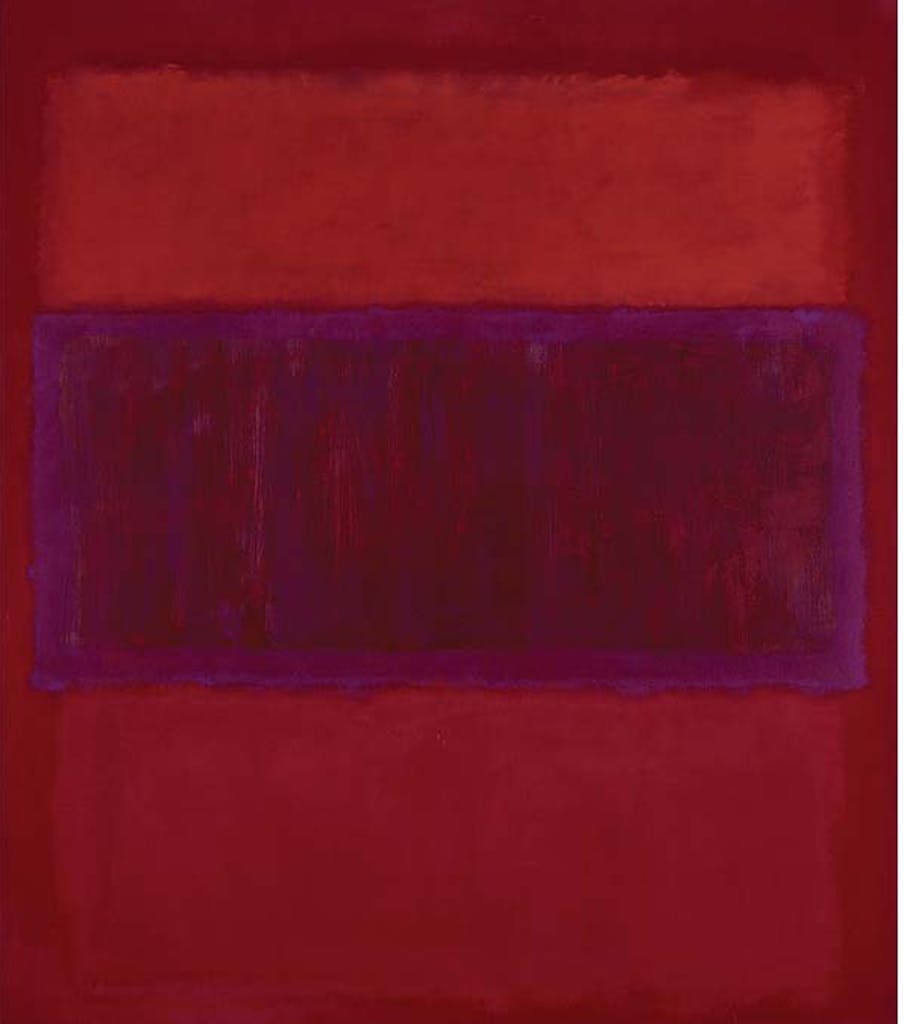
Untitled
(1957) Mark Rothko
Menil Collection
Houston
“Rothko’s belief in the capacity of color and form to have a spiritual impact on the viewer was one that not only defined the tenets of the design of the Rothko Chapel, in Houston, but also the architecture of the Menil Collection. The museum’s contemplative galleries are intended to cultivate an intimate interaction with the art, one that we hope has the potential to inspire.” Michelle White, curator
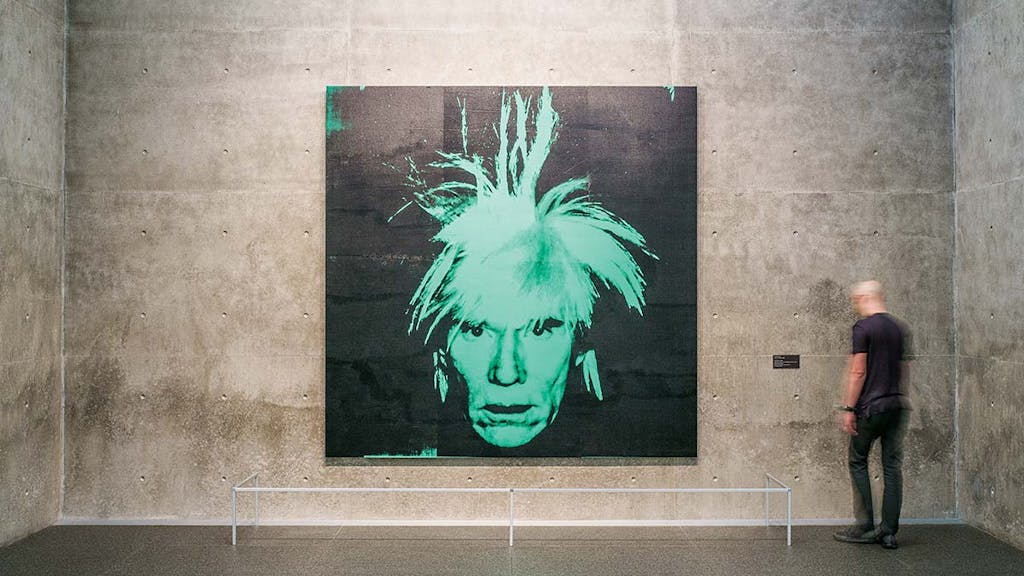
Self-Portrait
(1986) Andy Warhol
Modern Art Museum of Fort Worth
“Andy Warhol has perhaps left the most impressive legacy in contemporary art, influencing every generation of artists since the early sixties. Visually, he merged pop culture with high art; socially, he predicted the level of fame attainable for all of us today: through Facebook, Instagram, and Snapchat, everyone can be famous for fifteen minutes.” Andrea Karnes, curator
Stater of Athens
(c. 296 BCE)
San Antonio Museum of Art
“This small gold coin attests to the turmoil experienced by the city of Athens during the years following the death of Alexander the Great, in 323 BCE. Under siege and cut off from the Laurion silver mines, the Athenian tyrant Lachares had to find alternative sources for the coins needed to pay his troops. As a last resort, he stripped the gold from the famous cult statue of Athena in the Parthenon and melted down other dedications from the Acropolis. This stater is one of the few surviving gold coins minted by Lachares from these extraordinary sources.” Jessica Powers, the Gilbert M. Denman Jr. curator of art of the ancient Mediterranean world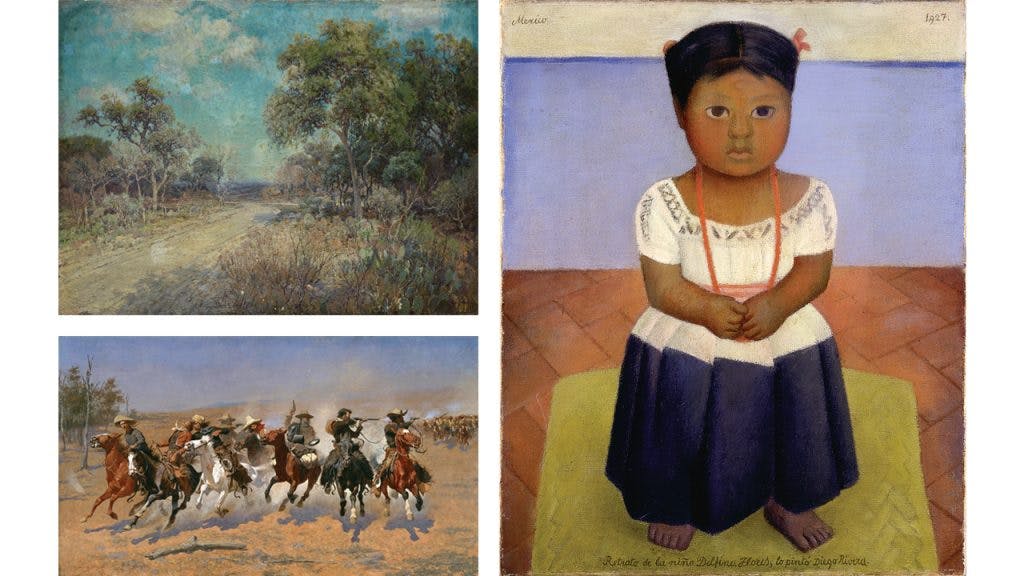
Three’s a Trend
Road to the Hills (c. 1918) Julian Onderdonk, Dallas Museum of Art (top left)
A Dash for the Timber (1889) Frederic Remington, Amon Carter Museum of American Art, Fort Worth (bottom left)
Delfina Flores (1972) Diego Rivera, McNay Art Museum, San Antonio
Like a work of art itself, a great collection starts with a kernel of inspiration. So it’s no wonder that these key acquisitions, each of which helped launch one of the state’s most beloved cultural institutions, made our curators’ lists. Julian Onderdonk’s Hill Country dreamscape was one of the earliest gifts to the Dallas Museum of Art, while Frederic Remington’s Wild West masterpiece was considered to be Amon G. Carter’s most significant buy. And it wasn’t long after Marion Koogler McNay broke ground on the house that would become the McNay Art Museum that she purchased Diego Rivera’s Delfina Flores.
Colt Walker Six-shooter
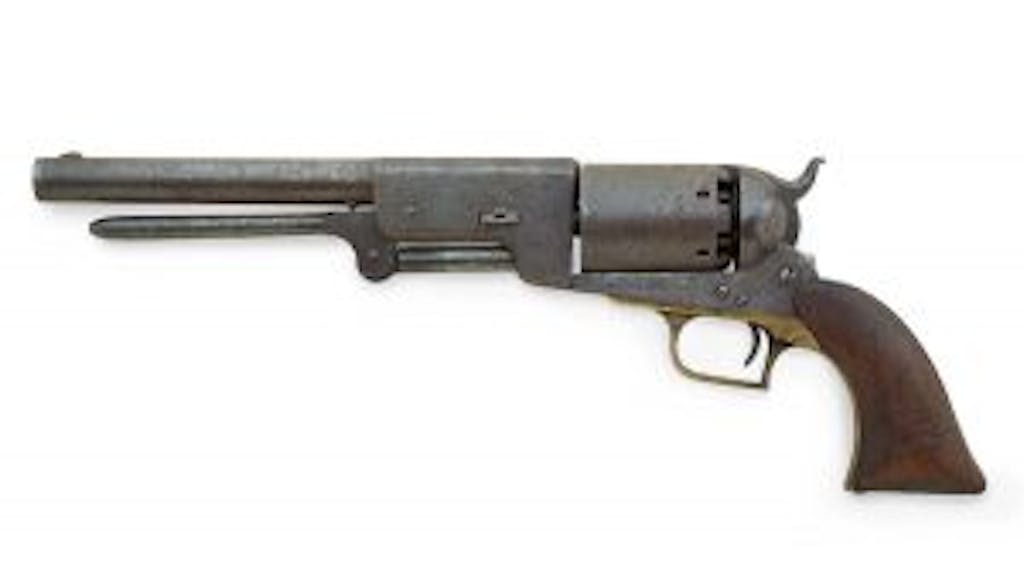
(1847)
The Bryan Museum
Galveston
“The Colt Walker was Samuel Colt’s largest six-shooter—it weighed 4 pounds 9 ounces with no ammunition—and was one of the first guns of its kind. Created as an improvement on the Colt Paterson, the Walker packed enough firepower, accuracy, and range to give the soldiers and Texas Rangers who carried it a decisive advantage over their nemeses. Because soldiers’ targets on the frontier were often Native Americans, the weapon has been called one of the guns that won the West.” Andrew Gustafson, former curator
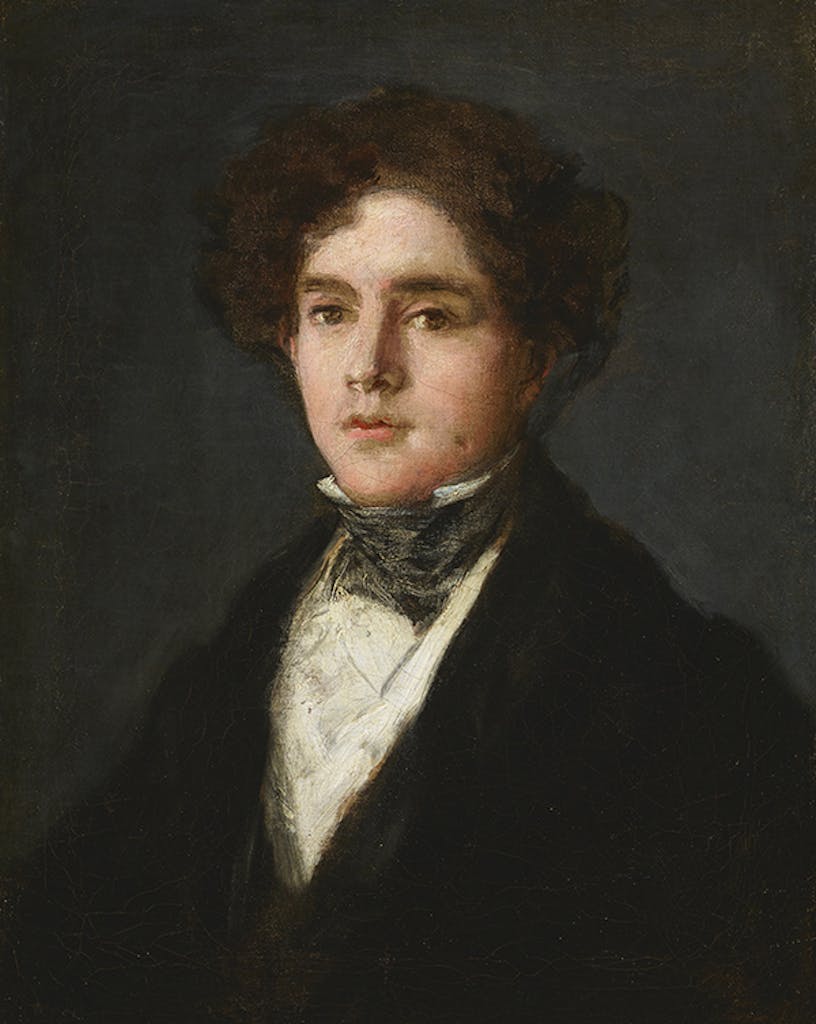
Francisco José de Goya
Portrait of Mariano Goya, the Artist's Grandson, 1827
Oil on canvas
20.5 x 16.5 inches
MM.2013.08
Portrait of Mariano Goya, the Artist’s Grandson
(1827) Francisco José de Goya y Lucientes
Meadows Museum
Dallas
“Francisco de Goya’s genius has challenged and inspired the legions of artists that have come after him. One of the artist’s last works, this touching portrait of his grandson, was a gift to Mariano and, nearly two centuries later, was a gift to the Meadows Museum on the occasion of its fiftieth anniversary.” Nicole Atzbach, curator

The Bayou Bend Collection
Museum of Fine Arts, Houston
“Bayou Bend Collection and Gardens is one of Houston’s most important and beloved cultural resources and the legacy of an extraordinary Texas woman, Ima Hogg. The daughter of James Stephen Hogg, the first native-born governor of Texas, Ima Hogg is legendary for her cultural patronage and civic leadership. She lived at Bayou Bend, a fourteen-acre estate in the city’s historic River Oaks neighborhood, from 1928 to 1965. During this time, she assembled one of the country’s premier collections of early American paintings and decorative arts. In 1957 she donated Bayou Bend to the Museum of Fine Arts, Houston—the property, the mansion, and the collection. She said she wanted Bayou Bend ‘to serve as a bridge to bring us closer to the heart of an American heritage which unites us.’ Bayou Bend opened to the public fifty years ago, in 1966. Rare examples of furniture, art, silver, ceramics, glass, and textiles once used in the homes of seventeeth-, eighteenth-, and nineteenth-century Americans are on view throughout the mansion’s twenty-eight rooms and corridors.” Bonnie Campbell, director of the Bayou Bend Collection and Gardens
Personification of Astrology
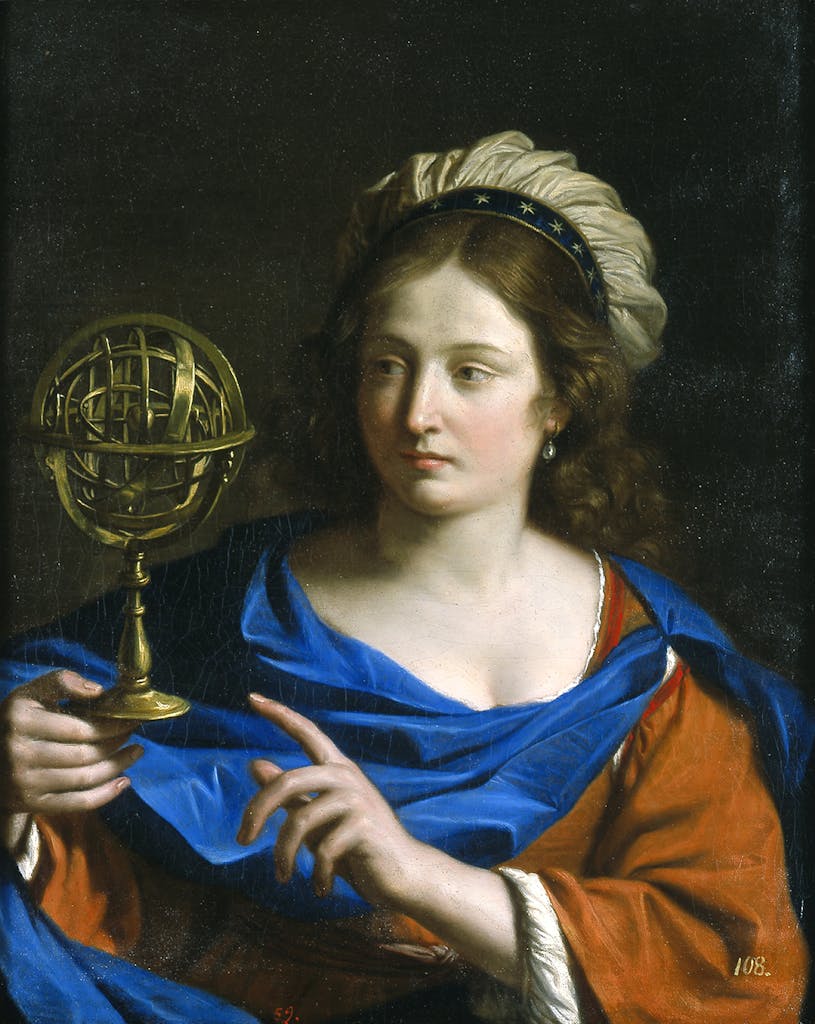
(c. 1650–1655) Guercino
Blanton Museum of Art
Austin
“Guercino depicts astrology as a woman holding an armillary sphere, a celestial globe that was used to calculate the movement of the heavens. With its clearly defined, idealized form and luminous colors, the painting serves as a small but striking example of Baroque Classicism. Purchased in 1984, Personification of Astrology belongs to a group of paintings that marked the beginning of the Blanton’s Old Master collection, which is now known for its significant holdings in Italian and French Baroque art. This early acquisition exemplifies the ideal combination of generous support and the discerning eye, a legacy that inspires us as we continue to build a world-class collection.” Jeongho Park, assistant curator of European art
Texas Habitat Dioramas
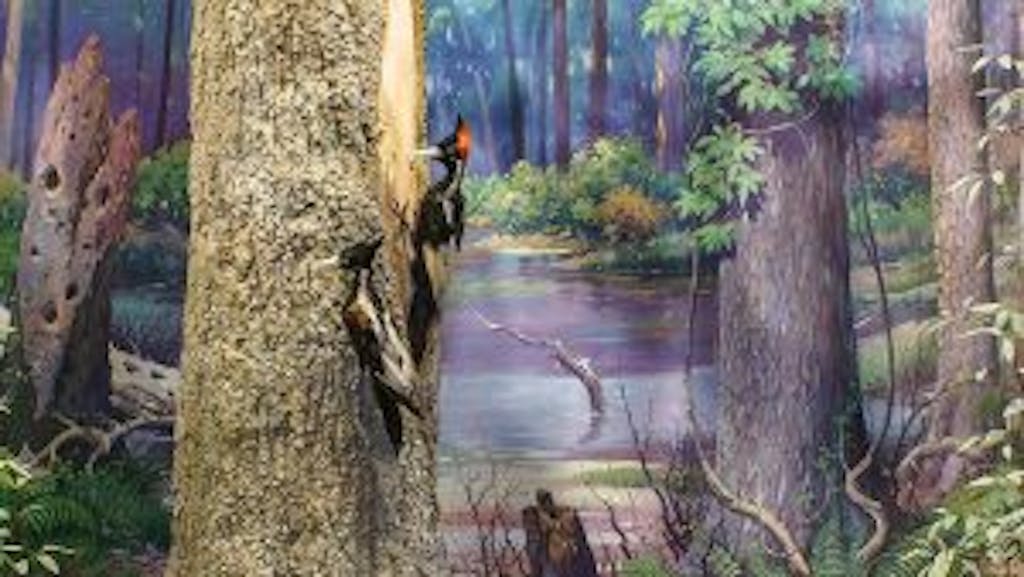
(1936)
Perot Museum of Nature and Science
Dallas
“This diorama is one of about a dozen that was built for the opening of the Dallas Museum of Natural History at the Texas Centennial Exposition, in 1936. The dioramas were meant to depict the flora and fauna of an actual place in Texas at the time, and as such, each one represents a time capsule. Here you see the ivory-billed woodpecker in a moment that none of us will probably ever see again: though native to parts of eastern Texas, the woodpecker has not had a confirmed sighting or evidence in decades, and may be extinct. The display is a poignant reminder that without a better understanding of our natural systems, we may endanger countless other species in our world—perhaps even our own.” Karen Morton, collections manager
T Anchor Ranch Headquarters and Blacksmith Shop
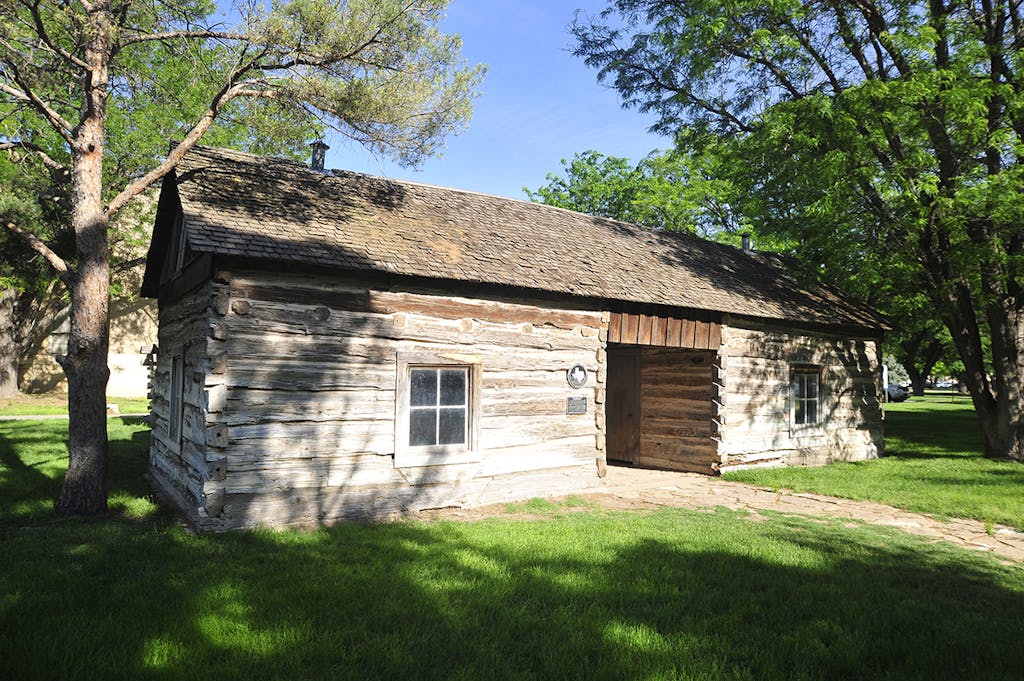
(1877)
Panhandle-Plains Historical Museum
Canyon
“Constructed by Leigh R. Dyer and Walter Dyer, the two-room log cabin headquarters and blacksmith shop of the historic T Anchor Ranch are the oldest Anglo-built structures in the Panhandle. The T Anchor became the Panhandle’s first ranch to utilize barbed-wire fencing, which dramatically changed how ranchers managed their herds.” Becky Livingston, curator of history
Jaguar Head
(c. 1900s)
Houston Museum of Natural Science
“This is an example of alebrije art, conceived in the early-twentieth century. The top of the animal’s head displays a scene taken from a Precolumbian codex, the Codex Zouche–Nuttall, dating back to the fifteenth century.” Dirk Van Tuerenhout, curator of anthropology
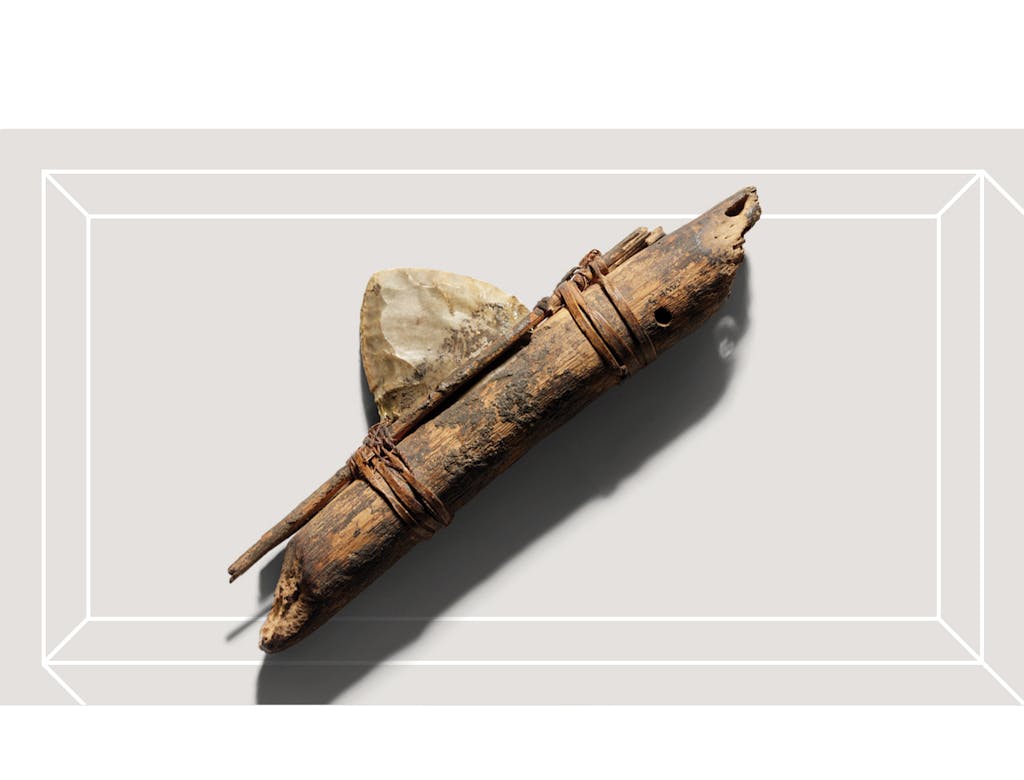
Ingenuity
What does it mean to be ingenious? The term implies cleverness and originality and invention, but as these pieces demonstrate, it also means to draw upon one’s resources—material, mental, emotional—to answer a challenge or resolve a question.
Sidesaddle
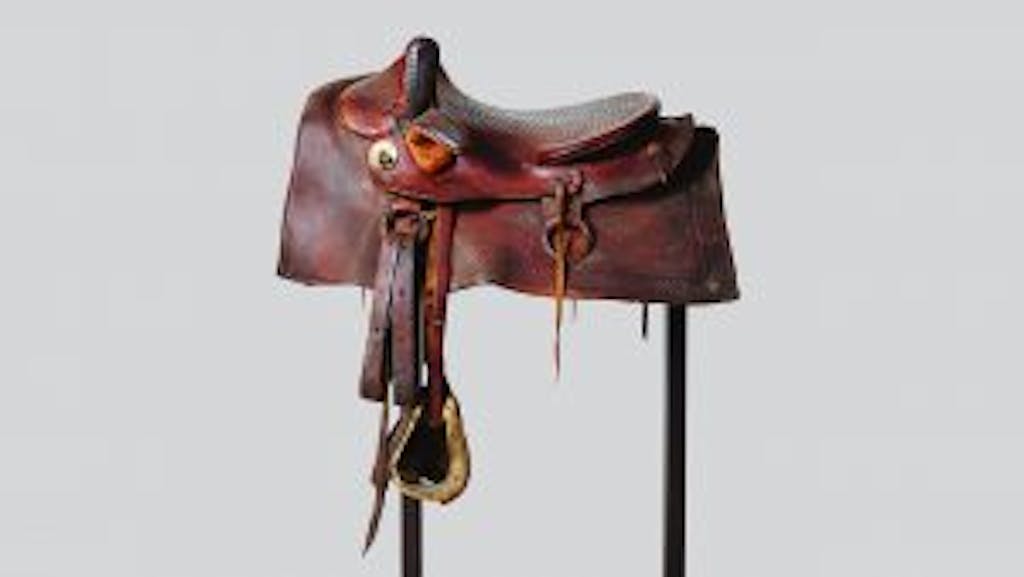
(c. 1870)
Panhandle-Plains Historical Museum
Canyon
“Designed by Charles Goodnight and built by S.C. Gallup, of Pueblo, Colorado, in 1870, this two-horned sidesaddle freed women from carriage transportation and allowed them to safely ride over rough land and participate in daily ranch work. Both practical and durable, this type of seat was quickly adopted by other saddle makers.” Becky Livingston, curator of history
Portrait Mask, Haida Peoples
(c. early-20th century)
Menil Collection
Houston
“The eyes and mouth of this naturalistic Haida portrait mask are connected to cords, and they would open and close when performed to recount familial histories or acts of divination. The imaginative articulation of the eyes and mouth bring the mask to life, suggesting transformation and opposing states of being that are central to the mask’s theatrical function.” Paul Davis, curator of collections
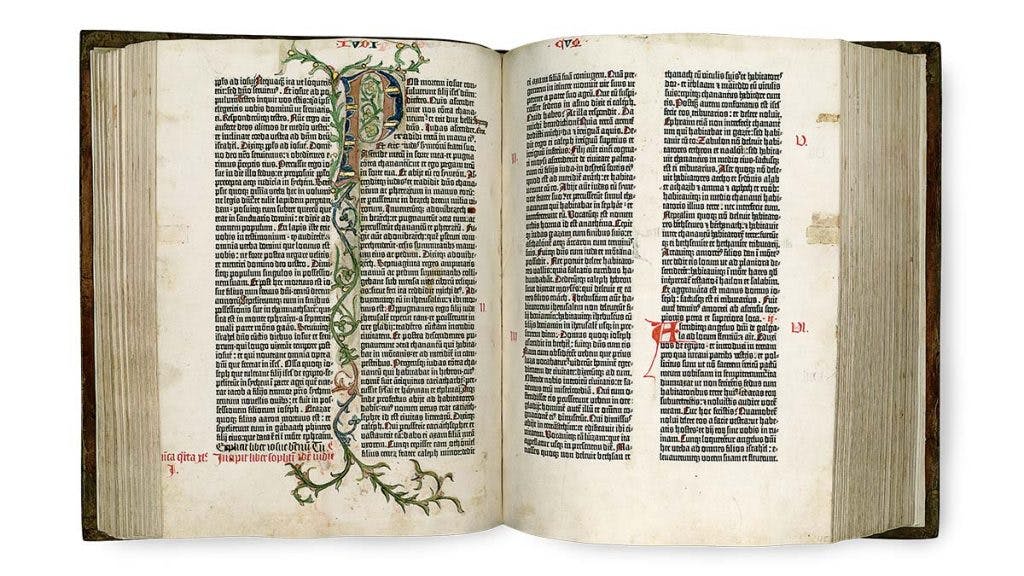
Gutenberg Bible
(1454 or 1455)
Harry Ransom Center
Austin
“The Gutenberg Bible is the first substantial book printed in the West with moveable metal type. Our copy is one of only five complete copies in the United States. Since its pages are turned four times annually, it is always worth a return visit to see it again.” Jim Kuhn, associate director and Hobby Foundation librarian

Horizontal Column of Five Squares, Excentric II
(1994) George Rickey
McNay Art Museum
San Antonio
“Engineered to move with only a gentle breeze, Rickey’s sculpture blends innovation with contemplation. Visitors are surprised to learn that it moves with the wind—no motor.” Kate Carey, director of education
Headdress
(c. 1900s) Pa’ikwené people, French Guiana and Brazil
Houston Museum of Natural Science
“This headdress, with a nape possibly inspired by the French Foreign Legion, is a testament to the talent of the Pa’ikewené’s artists. Feathers with serrated edges, beetle wing carapaces, cotton netting, and wicker make for a very intricate headgear.” Dirk Van Tuerenhout, curator of anthropology
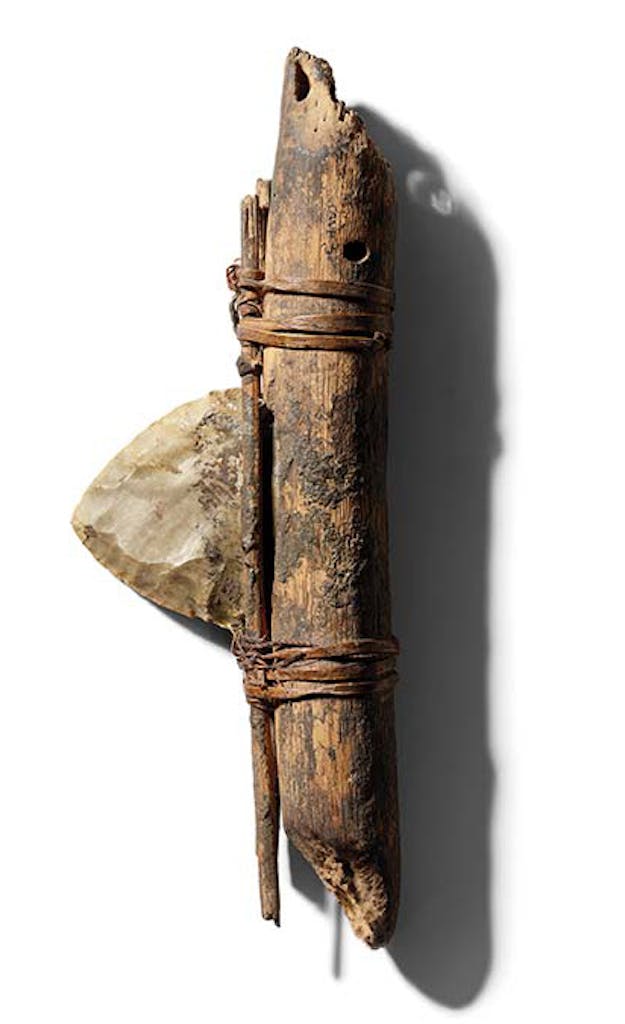
Agave Knife
(c. 1500–2000 BCE)
Witte Museum
San Antonio
“Though used for multiple tasks by the early people of the Pecos, this knife was specifically designed to cut the leaves from desert succulents, such as sotol and agave, during harvesting. It was made with readily available materials such as chert, for the blade; wood, for the handle; and yucca strips, for the ties.” Harry Shafer, curator of archaeology
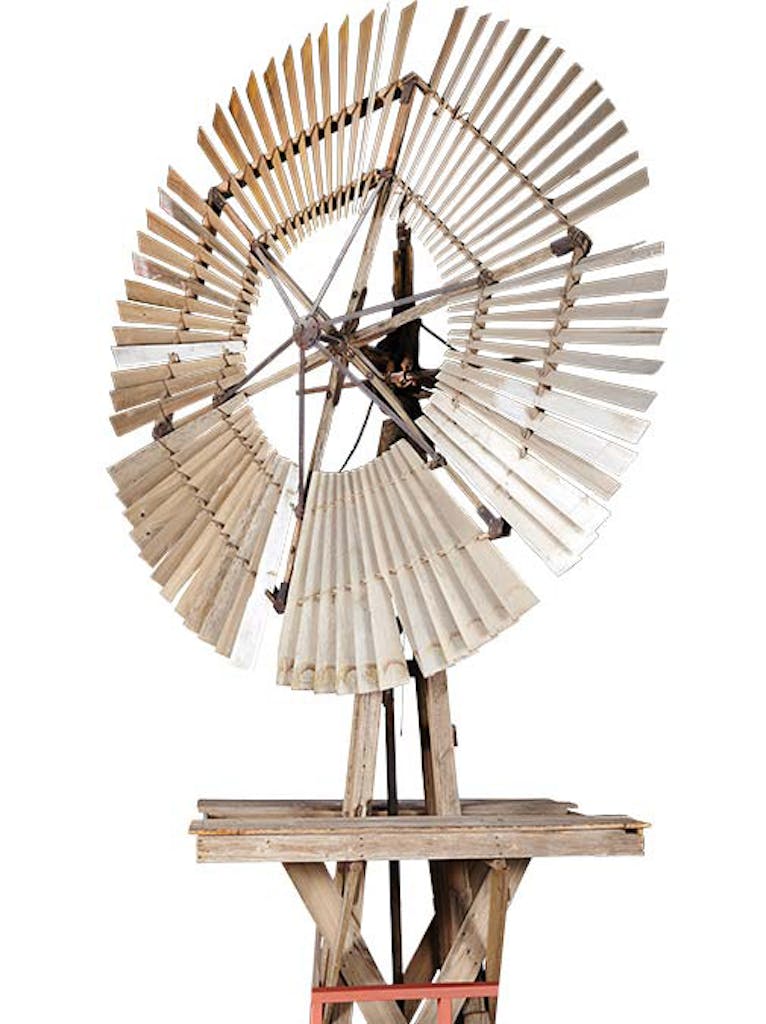
Standard Windmill With Two Eclipse Sections
(c. 1906)
Panhandle-Plains Historical Museum
Canyon
“The lack of sufficient surface water on the High Plains caused early European explorers to refer to the area as the Great American Desert. The introduction of the windmill helped solve the water problem and opened the way for communities to settle across the region.” Becky Livingston, curator of history

Standards and Emblems of the Battle of Sekigahara
(c. mid-17th century)
San Antonio Museum of Art
“These large folding screens only look contemporary. They’re a pictorial account of a battle between two families for control of Japan in the seventeenth century and feature symbols rather than images. The standards and crests, which represent the allegiances of various clans, would have been used to signal troop movements during the fighting. These particular screens record the story of the victorious Tokugawa family, which went on to found the final shogunate to rule Japan.” Emily Sano, Coates-Cowden-Brown senior advisor for Asian art
Narcisos [Narcissi]
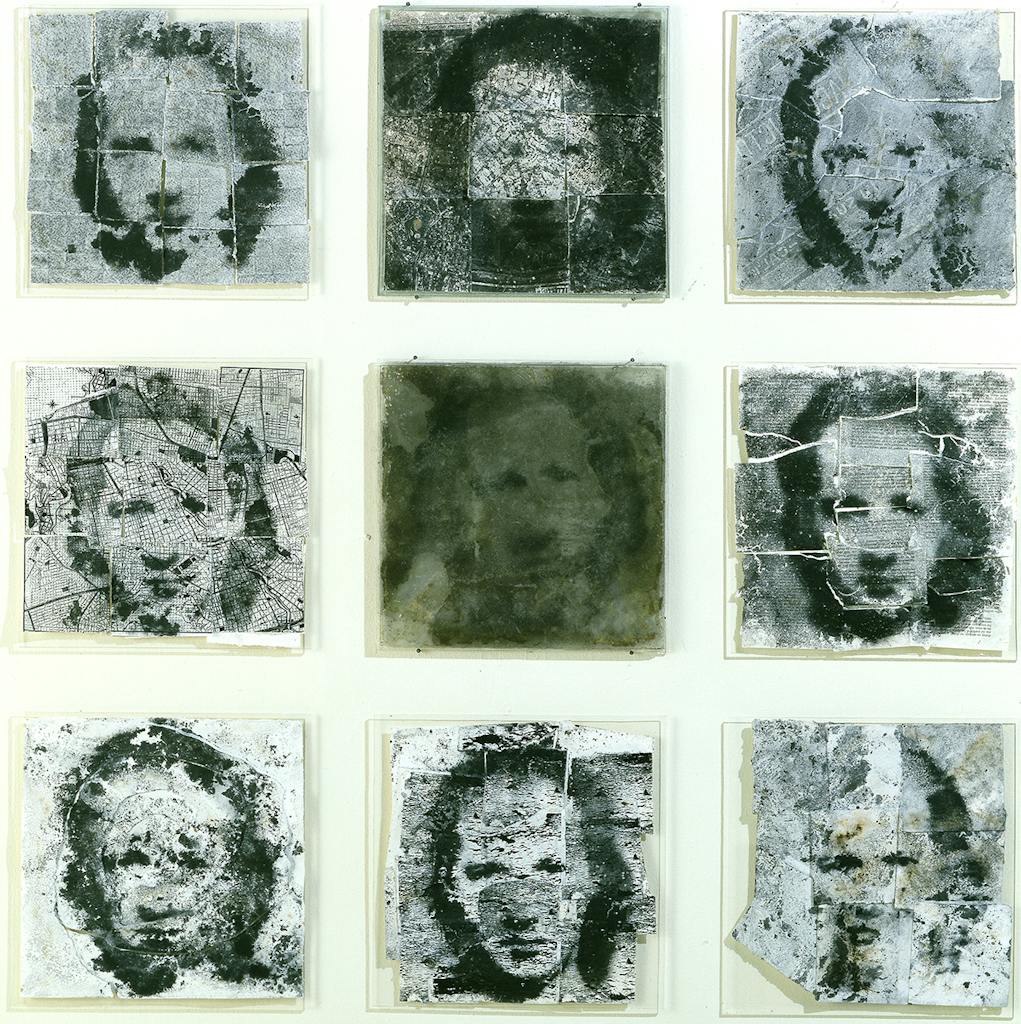
(c. 1994-1995) Oscar Muñoz
Blanton Museum of Art
Austin
“The nine images in Narcisos derive from a small photograph on Oscar Muñoz’s identification card. Muñoz placed silkscreens bearing this image into shallow Plexiglas boxes, each lined with paper, and then filled the boxes with water and carbon powder. As the water evaporated and the papers dried, the carbon powder settled through the silkscreens, imprinting images uniquely transformed by chance. This ingenious process tests the limits of photographic and graphic representation. Created during the violent Colombian conflict of the mid-1990s, Narcisos evokes the fragility and ephemerality of life.” Latin American art curatorial team

Kingdom Day
(2010) Mark Bradford
Modern Art Museum of Fort Worth
“Mark Bradford’s monumental Kingdom Day speaks to the artist’s ingenuity in redefining the idea of painting. The work includes abstract passages of paint and materials foraged from the streets of Los Angeles, all combined into an image that forms a symbolic map, charting the complex layers of culture and race of the city he grew up in. Kingdom Day is named after Los Angeles’s Kingdom Day Parade, which takes place every Martin Luther King Jr. Day.” Michael Auping, chief curator
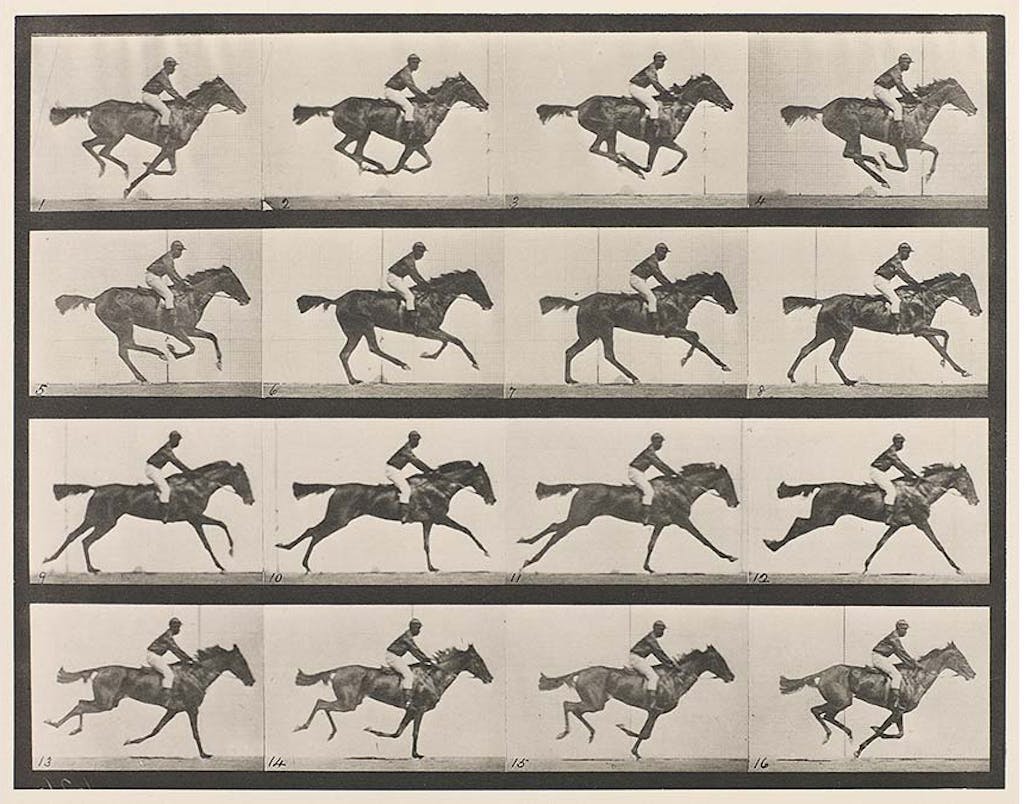
Annie G. With Jockey (.031 Second), One Stride in 16 Phases (Right Lead), Time of Stride: .46 Second; Strides Per Mile: 233; Speed: 1 Mile in About 107 Seconds
(c. 1887) Eadweard Muybridge
Amon Carter Museum of American Art
Fort Worth
“Muybridge was an established California landscape photographer in 1872 when Leland Stanford, the state’s governor, commissioned him to settle a long-standing debate over the position of a horse’s legs during a full gallop. By using a series of sixteen cameras and trip wires, Muybridge proved that, contrary to the understanding of scientists and artists, horses’ legs are not splayed out in hobbyhorse fashion when the animal is at full gallop.” Joy Kim, assistant curator of photographs
Three’s a Trend
(from left) The Cardsharps (c. 1595), Carvaggio, Kimbell Art Museum, Fort Worth
Cathedral (1947) Jackson Pollock, Dallas Museum of Art
L’homme poisson (1930) Salvador Dalí, Meadows Museum, Dallas
Several curators selected paintings whose ingenuity lay in their creators’ upending the constructs of their time. While Caravaggio changed the course of art history by choosing to paint everyday subjects, thus breaking the boundaries between art and life, Jackson Pollock challenged his contemporaries with a new and technical approach to paint. Salvador Dalí, meanwhile, in service to surrealism—which sought to bring dreams and the subconscious out into the world—applied a far-ranging, no-holds-barred imagination to his work.

Albero folgorato (Thunderstruck Tree)
(2012) Giuseppe Penone
Museum of Fine Arts, Houston
“At thirty-six feet tall, Giuseppe Penone’s Albero folgorato is a commanding and unforgettable presence. Masterfully cast in bronze from an actual tree, this monumental sculpture captures for all time an instant when the heavens and earth met during a thunderstorm. For Penone, the power of nature is the also the source of all creation, and as one tree was destroyed by lightning, it also gave birth to this profoundly evocative work of art. Installed on the MFAH’s South Lawn in the summer of 2014, the gilded bronze of Albero folgorato sparkles in the Texas sun.” Alison de Lima Greene, Isabel Brown Wilson curator of modern and contemporary art, and Althea Ruoppo, curatorial assistant, contemporary art and special projects
Alamosaurus Skeleton Reconstruction
Perot Museum of Nature and Science
Dallas
“The eighty-four-foot-long reconstruction of the giant sauropod dinosaur Alamosaurus sanjuanensis represents almost twenty years of collection, preparation, interpretation, research, and luck. It is comprised of lightweight foam ‘bones’ milled from 3-D data sets scanned from the real bones in three different institutions’ collections: the Perot Museum of Nature and Science, the Smithsonian Institution, and the Vertebrate Paleontology Laboratory at the University of Texas at Austin. The creation of the mounted skeleton was only possible through a combination of old-school collecting and fossil-preparation techniques, modern technologies in image capture and 3-D manufacturing, and a desire to make something the world had never seen before. It remains the largest mounted dinosaur skeleton in Texas and is currently the only full Alamosaurus mount in the world.” Tony Fiorillo, vice president of research and collections and chief curator, and Ron Tykoski, director of paleontology lab

Environment
Background. Circumstances. Habitat. Whichever word you prefer, we’re all products of it. And, as this assortment of works bears out, our surroundings invite frequent communion, whether that’s with elements of the natural world (rare stone, garden-variety leaves) or in realms—a tunnel of ambient light, a dark swamp of colors—of our own creation.
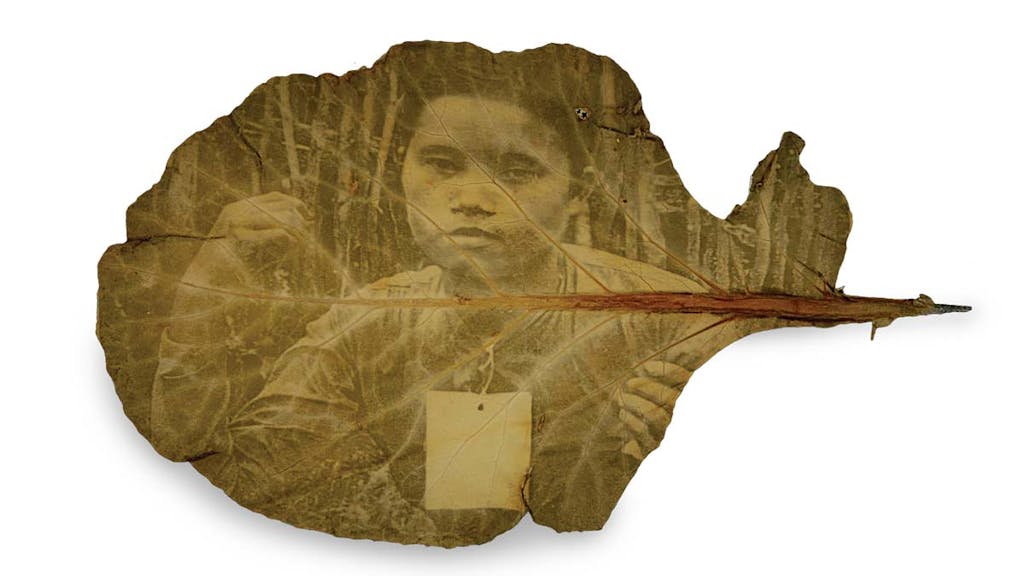
Tagged
(From the series Immortality: The Remnants of the Vietnam/American War, 2005) Binh Danh
Harry Ransom Center
Austin
“As a child in California, Danh observed the patterns a garden hose made on the grass when it was left out on the family lawn. Later he incorporated the action of photosynthesis into his photographic process, producing what he calls chlorophyll prints. He puts scans of digitized negatives in contact with living leaves, allowing the image to ‘develop’ in the sunlight and become permanent—in this case, on a spinach leaf. Danh’s subject matter deals extensively with the Vietnam War, from which his family was forced to flee in 1979. As he has put it: ‘The leaves express the continuum of war . . . the dead have been incorporated into the landscape of Vietnam during the cycles of birth, life, and death.’ ” Linda Briscoe Myers, associate curator of photography (Editor’s note: the photo is not on display but you can request to see it.)
Stone Money
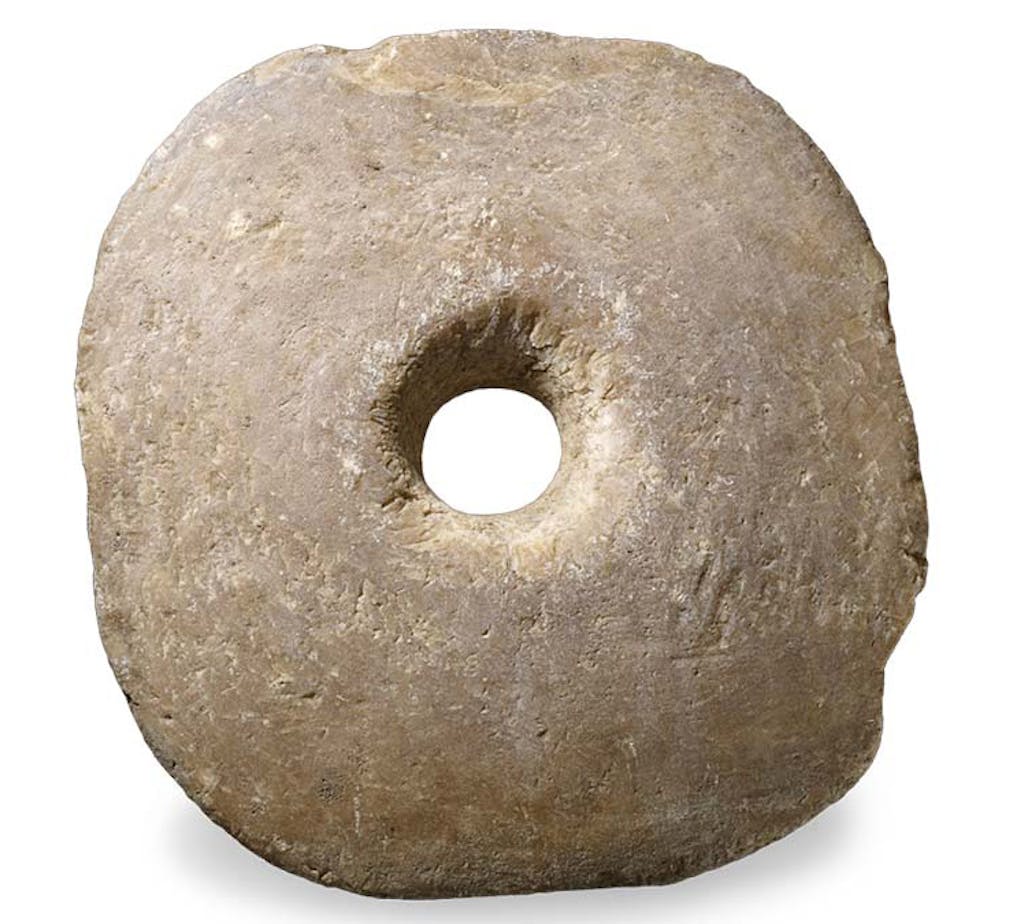
(c. 1800s)
Houston Museum of Natural Science
“This disc was carved by the inhabitants of the Pacific island of Yap in the nineteenth century. To create it, the Yapese would first have to travel to the island of Palau to obtain the stone; the labor involved in traveling hundreds of miles across the open ocean and returning with a finished product represented sweat equity, or money.” Dirk Van Tuerenhout, curator of anthropology
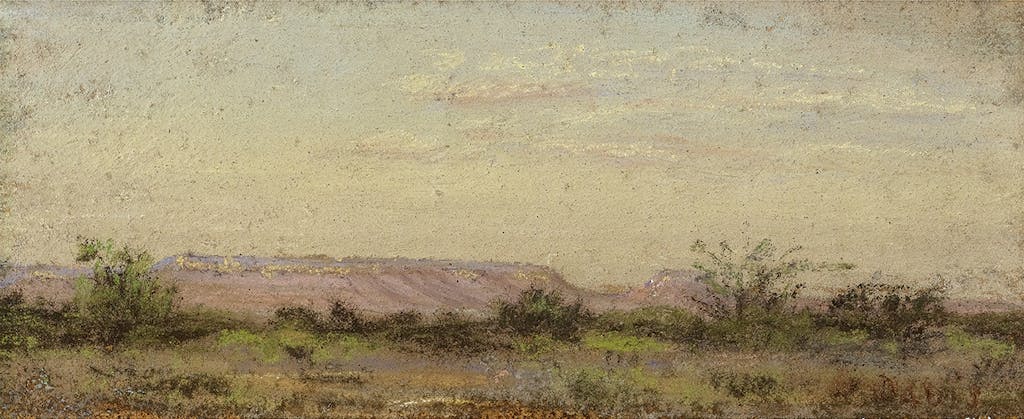
Frank Reaugh, “Davis Mountains (no date, c. 1900s).” This subtle pastel stands as a relatively unknown piece that perfectly depicts the spirit of Frank Reaugh. Known as an artist, teacher, inventor, and naturalist, Reaugh spent his life documenting the seemingly limitless, unsettled southwestern United States. The artist described his contribution best in his 1940 will and testament: “The main part of my property is in pictures… These are largely of the great prairies of Texas and the longhorn cattle of fifty years ago… It is my wish that these pictures be kept together if only for historical reasons. They create the spirit of time. They show the sky unsullied by smoke, and the broad opalescent prairies not disfigured by wire fences or other signs of man.”
Davis Mountains
(c. 1900s) Frank Reaugh
The Bryan Museum
Galveston
“This subtle pastel is a relatively unknown piece that captures the spirit of Reaugh, who spent his life documenting the seemingly unlimited, unsettled southwestern United States. He described his contribution best in 1940, in his will: ‘The main part of my property is in pictures. . . . These are largely of the great prairies of Texas and the longhorned cattle of fifty years ago. . . . They create the spirit of the time. They show the sky unsullied by smoke, and the broad opalescent prairies not disfigured by wire fences or other signs of man.’ ” Andrew Gustafson, former curator
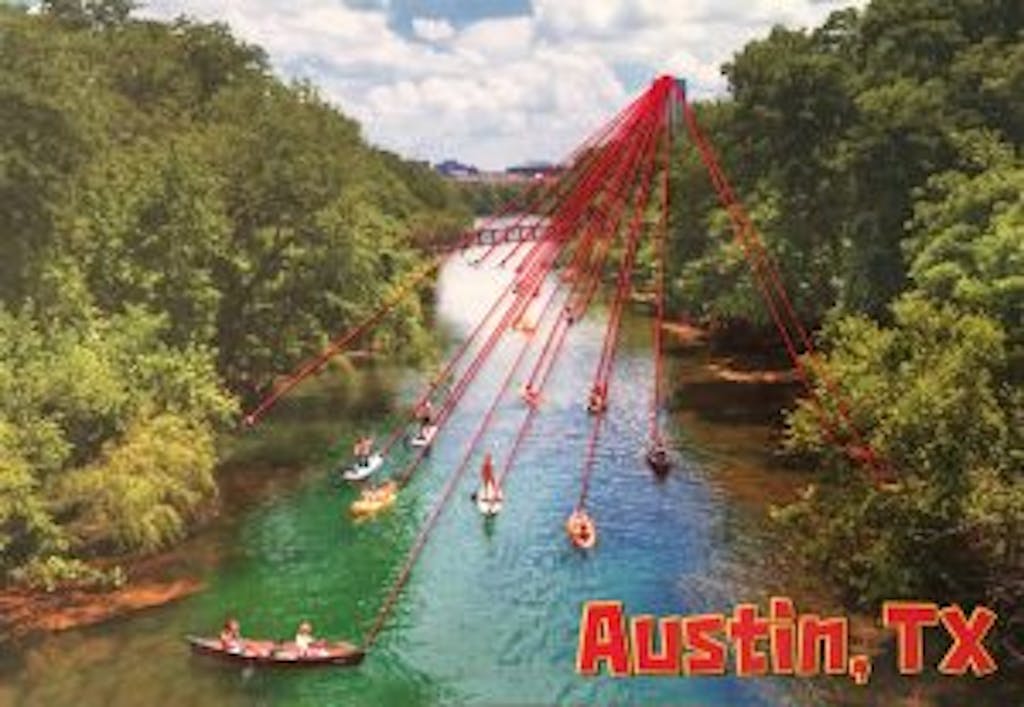
Austin, Texas (Town Lake) from the series Paranormal Postcards
(2016) Nina Katchadourian
Blanton Museum of Art
Austin
“Whether you call it Town Lake or Lady Bird Lake, it’s hard to imagine Austin without it. In this stitched postcard, Nina Katchadourian draws our attention to the rowers, kayakers, and paddle boarders who are as common on the lake as sunbathing turtles. In preparation for her exhibition at the Blanton opening March 12, 2017, Katchadourian created this postcard as an addition to her ongoing installation, Paranormal Postcards. The project began during a long layover in Oslo in 1998, when the artist purchased a postcard from a gift shop at the airport. Nearly two decades later, she has stitched over two hundred postcards in locations across the globe, incorporating new postcards from the city or town every time the work is exhibited. This postcard will be in the Blanton’s exhibition serving as one of the artist’s homemade valentines to Austin.” Veronica Roberts, curator of modern and contemporary art
Feathering the Cultural Nest

John Alexander, Feathering the Cultural Nest, 1986
A native of Beaumont, Texas, John Alexander’s paintings preserve the swamps, animals, and natural habitats of his childhood which he saw as disrupted and disappearing in the 1970s and 80s.
(1986) John Alexander
McNay Art Museum
San Antonio
“John Alexander is from Beaumont, and his paintings preserve the swamps, animals, and natural habitats of his childhood that he saw as disrupted and disappearing in the seventies and eighties. When you look at this painting, there’s a sense of anxiety. There are definitely overtones about what we’re doing to the environment—and this was in the mid-eighties, long before recent oil spills! You have all of these different kinds of birds and fish in close proximity, and even though you may think of the coast as broad, the world Alexander brings us into is dense and claustrophobic and chaotic.” René Paul Barilleaux, chief curator and curator of contemporary art
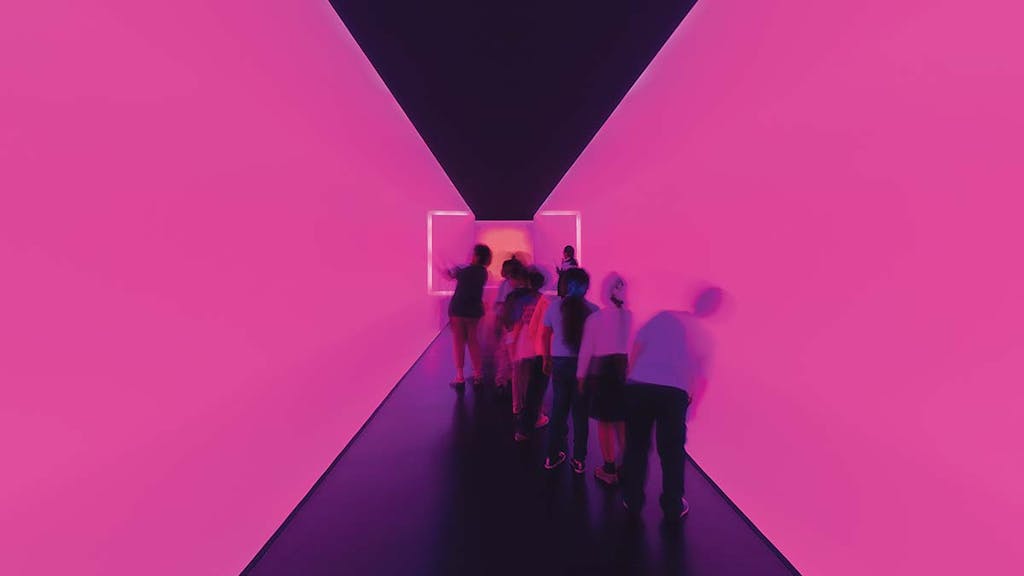
The Light Inside
(1999) James Turrell
Museum of Fine Arts, Houston
“Made with the purest of materials—light and space—Turrell’s hypnotic, all-encompassing work, created for the underground tunnel that connects the museum’s two gallery buildings, inspires awe. Enclosed by walls of ambient light, the raised walkway gives you the sense of floating in a limitless space, while the changing light cycle—which transitions from blue to magenta to crimson—invites you to pause in wonder.” Alison de Lima Greene, Isabel Brown Wilson curator of modern and contemporary art, and Althea Ruoppo, curatorial assistant, contemporary art and special projects
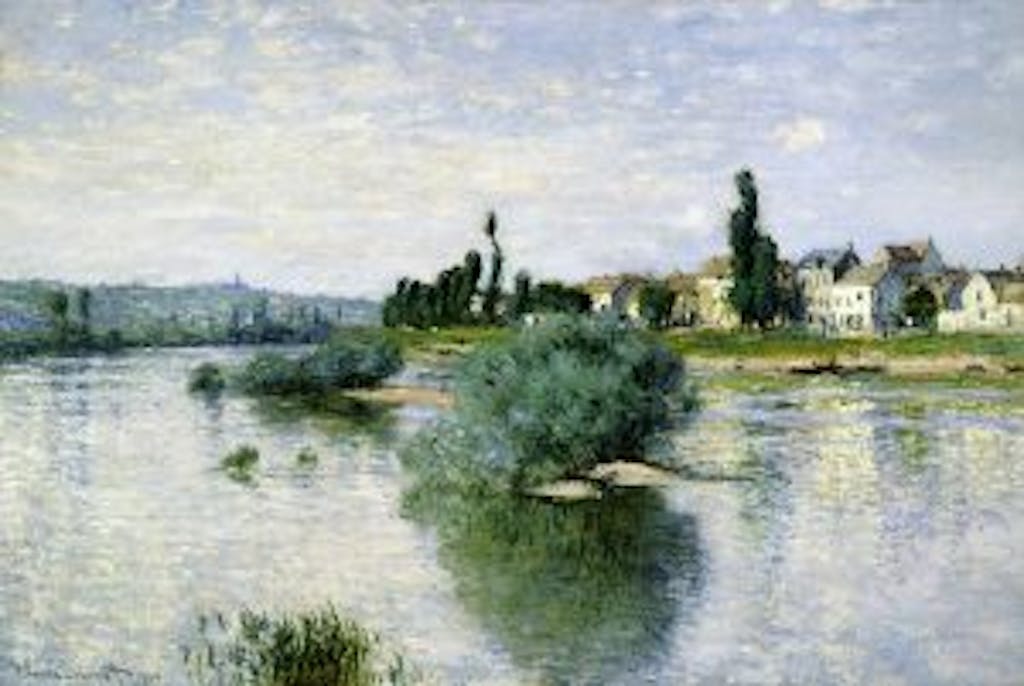
The Seine at Lavacourt
(1880) Claude Monet
Dallas Museum of Art
“Monet was intensely aware of and interested in rendering the fleeting effects of light and atmosphere in his immediate environment, particularly as it involved water, whether oceans, rivers, or his famed water lily pond. By using a boat as a mobile studio, Monet was able to capture unusual vantage points like the one in The Seine at Lavacourt, where the viewer’s field of vision is dominated by the ethereal blues of sky and water.” Nicole R. Myers, the Lillian and James H. Clark curator of European painting and sculpture
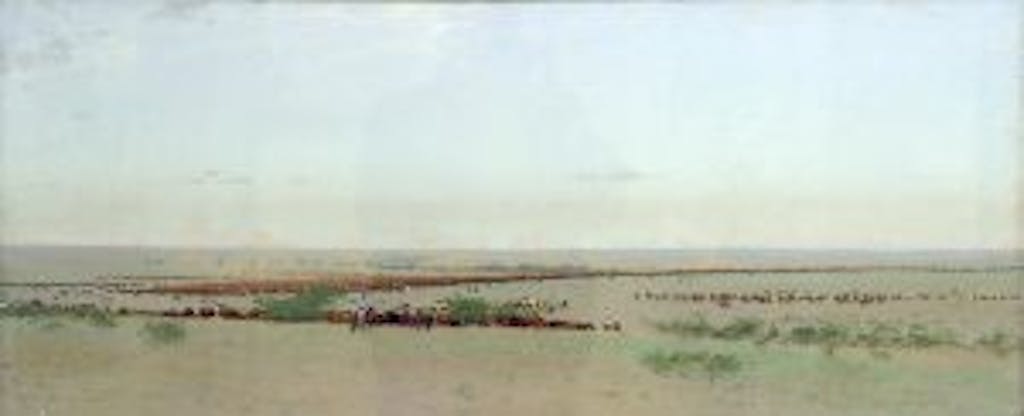
The O Roundup
(1888) Frank Reaugh
Panhandle-Plains Historical Museum
Canyon
“Painted in 1888 from sketches made northwest of Fort Belknap, this Frank Reaugh painting depicts how the environment of northwest Texas was largely treeless (and fenceless) only a few years after buffalo had been largely exterminated and before their loss impacted the ecosystems of the region.” Becky Livingston, curator of history

Rift
(1968/1982) Michael Heizer
Menil Collection
Houston
“Among a series of three large-scale works by Heizer in the Menil’s front lawn, Rift sinks into the grass, under the viewer’s feet. The subtle insertion of the long, meandering geometric line in the ground asks the viewer to interact with his or her environment in a different way.” Michelle White, curator
Untitled (Sculptural Study, Two-part Standing Construction)
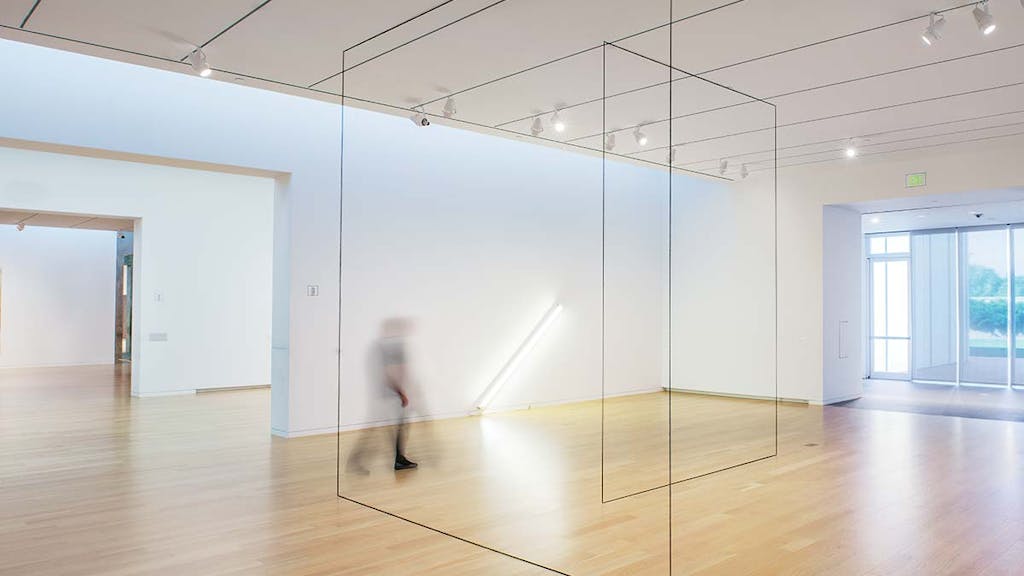
(c. 1978/2007) Fred Sandback
Modern Art Museum of Fort Worth
“Sandback’s work is composed of inexpensive black yarn tautly strung between the ceiling and floor in the Modern’s gallery space. Configured into two perpendicular rectangles, the suspended yarn creates architectural mass. Made with the simplest of materials, it is a surprising and mind-bending environment.” Michael Auping, chief curator

Sho
(2007) Juame Plensa
Meadows Museum
Dallas
“Sho’s size and translucent wire structure encourage interaction with its environment; visitors to our outdoor sculpture plaza enjoy looking at their surroundings through the wire mesh head to speculate about what the girl might be thinking. At night, the work is lit from beneath, so that it radiates with the kind of energy that the artist feels is emitted by people.” Nicole Atzbach, curator
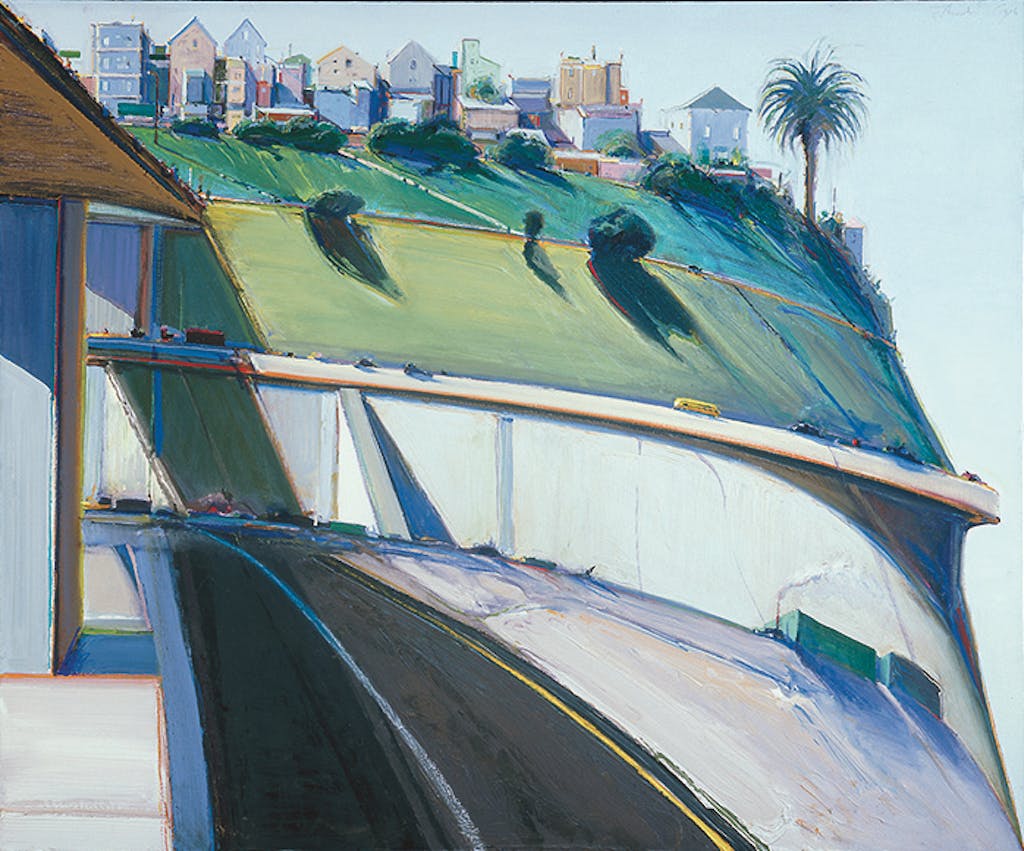
Potrero Hill
(1976) Wayne Thiebaud
San Antonio Museum of Art
“Upon purchasing a home in San Francisco’s Potrero Hill neighborhood in 1972, the artist became inspired by the area’s quirky and dramatic curving slopes, which he exaggerates in the painting along with the highway’s sharp edge, contrasts between sunlight and shadow, and disparities in scale between the landscape and the seemingly tiny cars and homes that inhabit it. All in all, these details add up to a playful look at the precariousness of the hilly, earthquake-prone San Francisco landscape.” Suzanne Weaver, the Brown Foundation curator of modern and contemporary art
Lunar Landscape
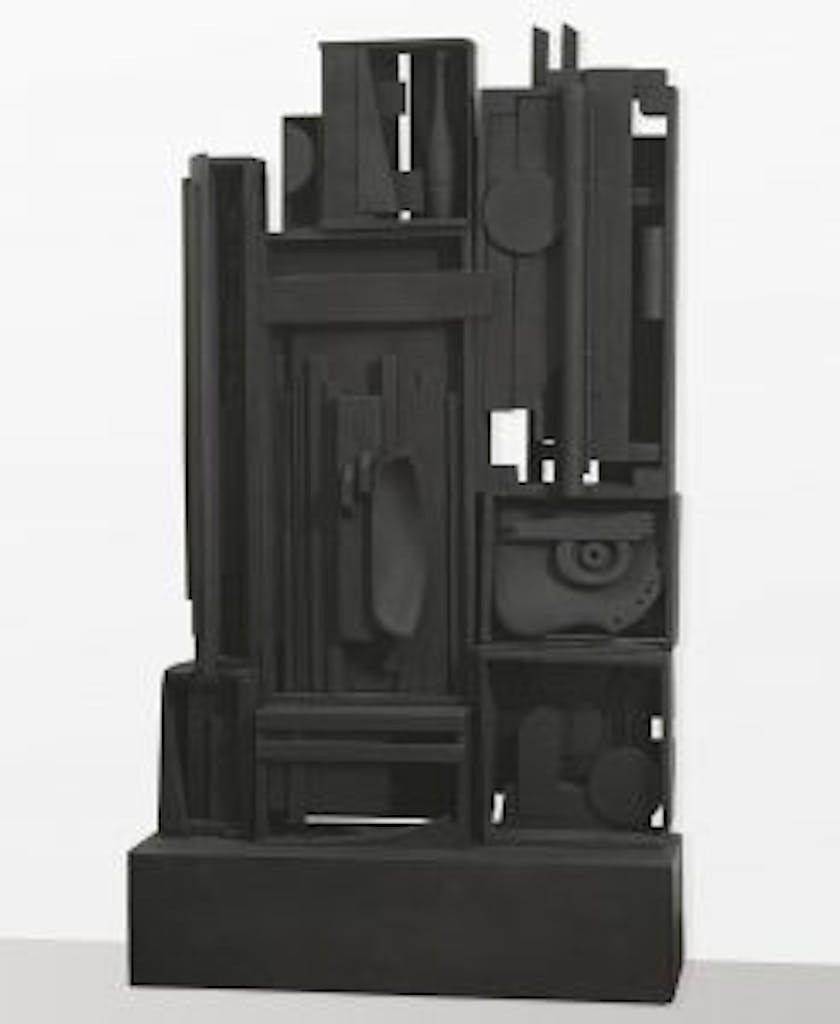
(c. 1959–1960) Louise Nevelson
Amon Carter Museum of American Art
Fort Worth
“Nevelson reinvented notions of sculpture in this wall relief composed from found objects, such as a bedpost, chair seat, and juggling pin, that she scavenged from the streets around her New York City studio. By painting these recognizable objects black and arranging them by form rather than function, she created a monumentally scaled work that acts as an environment for the viewer to be immersed within.” Shirley Reece-Hughes, curator of paintings and sculpture
Thom Mayne Building
(2012)
Perot Museum of Nature and Science
Dallas
“The building, created by Pritzker Prize–winner Thom Mayne and his firm, Morphosis, is considered the museum’s twelfth exhibit hall because it is used as a teaching tool that provides ‘living’ examples of engineering, sustainability, and technology at work. Key green elements include rainwater and runoff-collection systems (filling two 25,000 gallon cisterns) that provide for irrigation and most of the building’s non-potable water needs; solar panels that heat the cafe’s water; native Texas landscaping that reflects the state’s major ecosystems; and repurposed, sustainable, and local materials used in construction, to name a few. Lauded for its artistry, the museum also has achieved LEED Gold Certification from the U.S. Green Building Council; Green Globes® highest-possible ranking for sustainable building design; and certification from the Sustainable Sites Initiative, which emphasizes landscape and site design.” Dan Kohl, interim chief executive officer and vice president of creativity and innovation
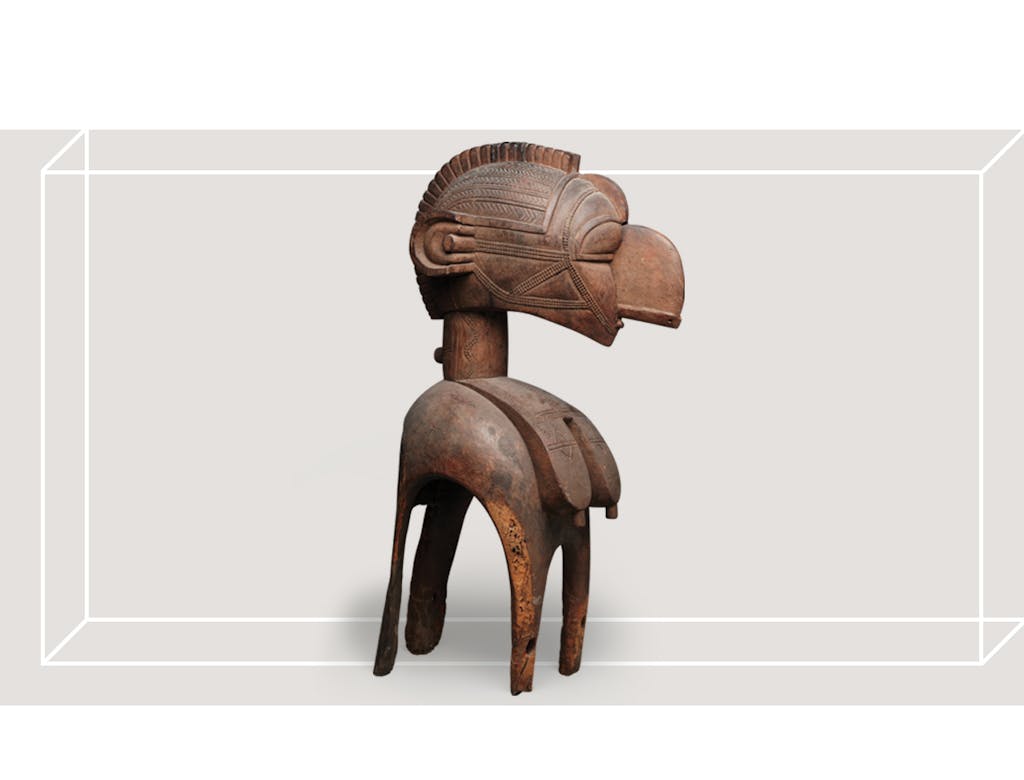
Community
One of the benefits of art is its ability to highlight commonalities and draw attention to differences—in other words, to show us ourselves. The following examples, which explore our traditions, our groupings, and our neighborhoods, offer compelling observations on the power of the collective.
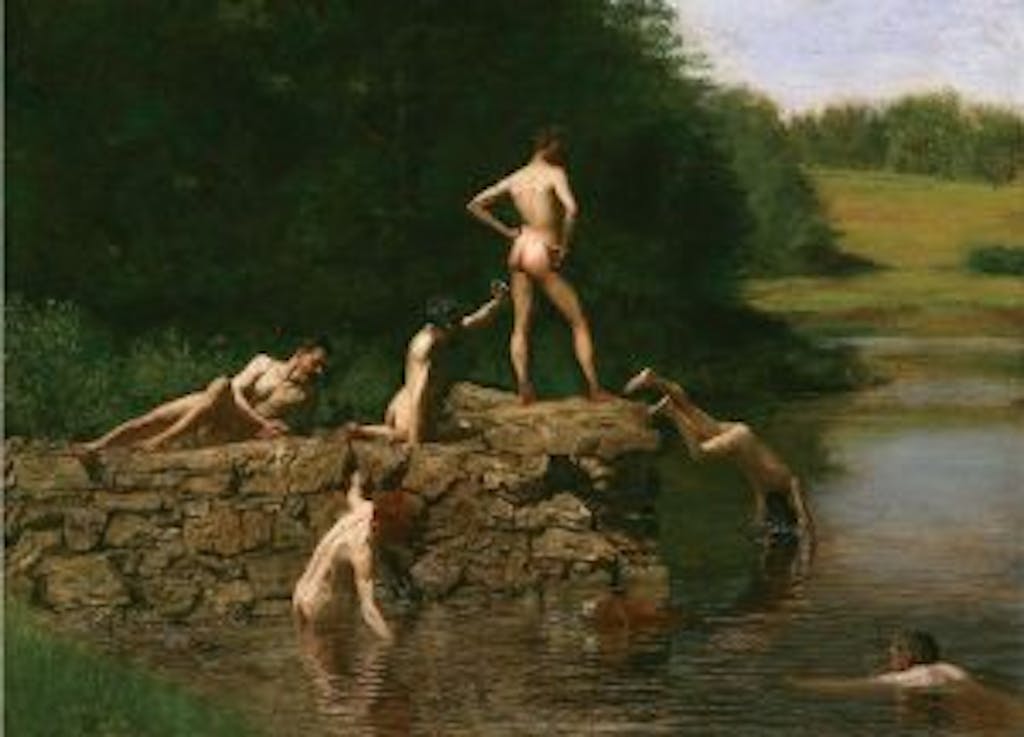
Swimming
(1885) Thomas Eakins
Amon Carter Museum of American Art
Fort Worth
“This Eakins masterwork depicting him taking his class out for a swim—that’s him at the bottom right—is a reflection of what he believed in, which was realism and the accuracy of anatomy and movement. It’s Eakins at the height of his powers, which is why when the Fort Worth Art Association was going to put it up for auction in 1990, locals—including schoolchildren, who contributed coins—combined resources to help the Amon Carter acquire the painting. Along with five foundations and the Fort Worth Star-Telegram, the ‘people of Fort Worth’ are recognized in the work’s credit line as having ensured it would stay in Texas.” Shirley Reece-Hughes, curator of paintings and sculpture
Blue Yoke Dress, Lakota Nation
(c. late-19th century)
Houston Museum of Natural Science
“During the reservation era, around 1870 to the 1930s, Native artists were limited in the ways they could express their cultural identity. A heavily beaded dress like this would have been made for ceremonial use, serving as a wearable emblem of Native pride.” Dirk Van Tuerenhout, curator of anthropology
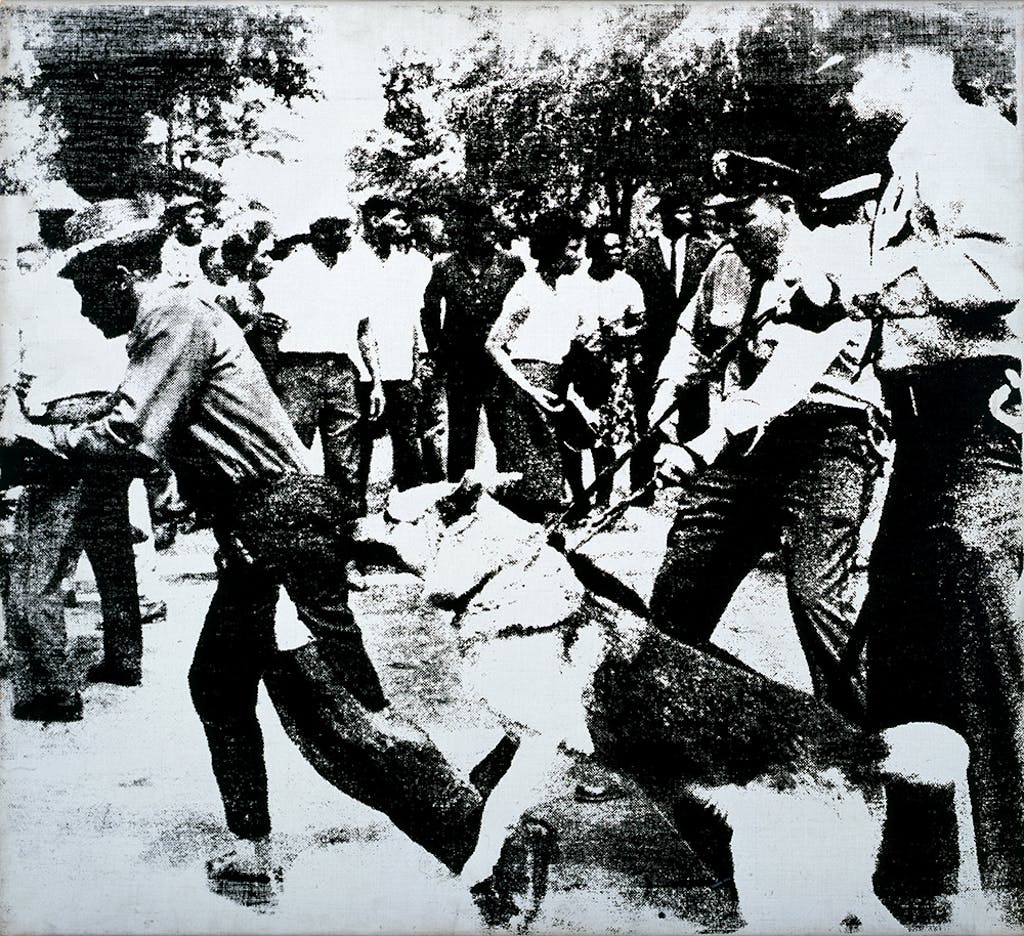
Little Race Riot
(1964) Andy Warhol
Menil Collection
Houston
“In this work, Warhol takes a well-known image from the press—one of police brutality during the Birmingham race riots in 1963. Characteristic of the well-known American Pop artist’s creative process, his reuse of the provocative photograph through silk-screening provides a way of reflecting on both the power and ubiquity of repetitious imagery. In our contemporary moment, such a searing historical image provides a way to reflect on the role art plays in our conversations about contemporary politics.” Michelle White, curator
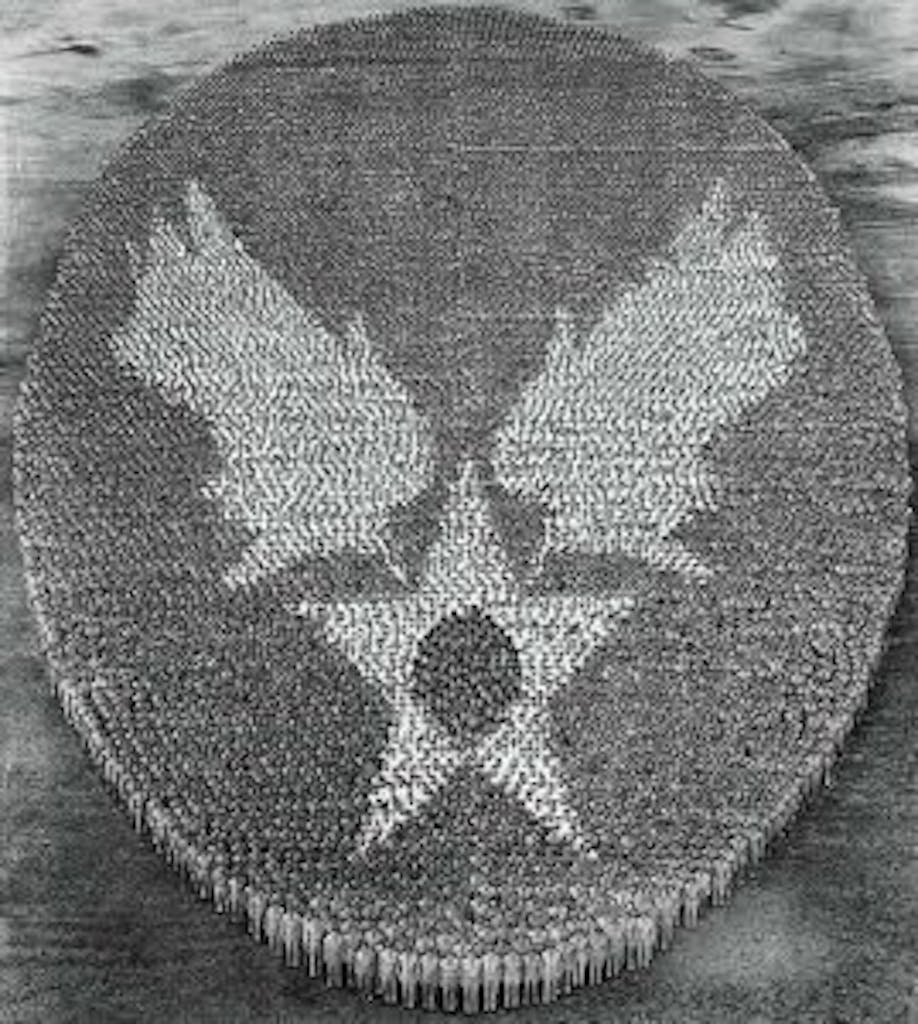
Indoctrination Division, Air Training Command, Lackland Air Base, San Antonio Texas, July 19, 1947
Eugene Omar Goldbeck
Harry Ransom Center
Austin
“E. O. Goldbeck, who was born in San Antonio, was a master at photographing large groups of people, most often with his Cirkut camera in panoramic shots. However, for this image, he built a two-hundred-foot tower to capture the 21,000 members of the Indoctrination Division of the Air Training Command, all standing in a formation representing the division’s insignia. Goldbeck’s extensive blueprints, which corrected for perspective distortion, were transferred in chalk onto the grass to quickly guide the men into formation on a hot summer day.” Linda Briscoe Myers, associate curator of photography (Editor’s note: the photo is not on display but you can request to see it.)
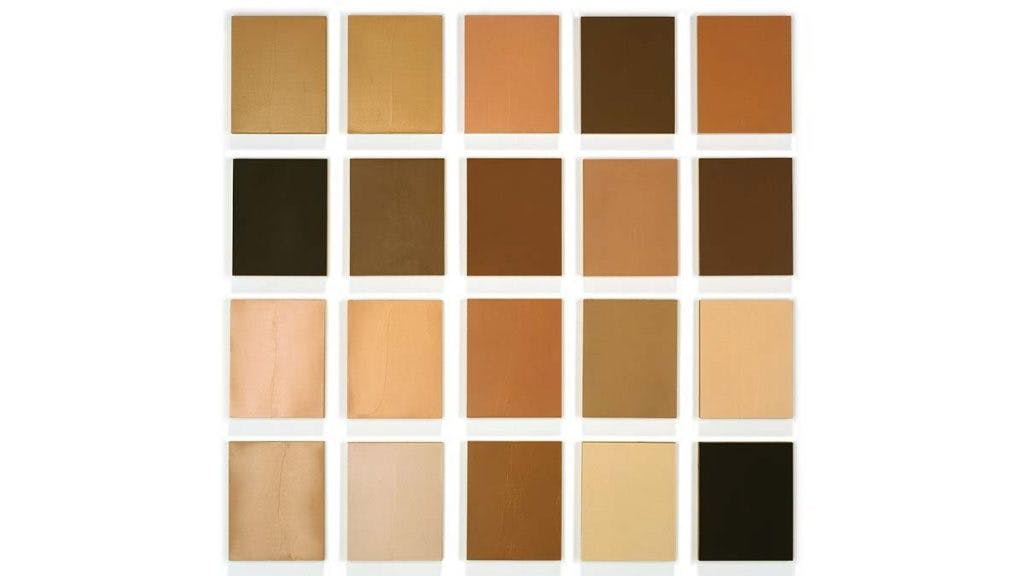
Synecdoche
(1998) Byron Kim
Blanton Museum of Art
Austin
“A fusion of abstraction and representation, Synecdoche’s painted panels replicate the skin color of twenty individuals that Kim encountered at random on the University of Texas at Austin campus. The title refers to a figure of speech, in which a part represents a whole, pointing to the futility—and the absurdity—of defining people by their skin color alone.” Evan Garza, assistant curator of modern and contemporary art (Editor’s note: the Blanton’s upstairs galleries are closed for renovation but will reopen on February 12, 2017.)
Spiral City

(2002) Melanie Smith
Modern Art Museum of Fort Worth
“This work depicts an aerial view of Mexico City, where the British-born Smith has lived for decades. Community is at the fore: the neighborhood is Iztapalapa, a poverty-stricken borough on the outskirts of the capital that continues to grow and thrive with urbanization.” Andrea Karnes, curator
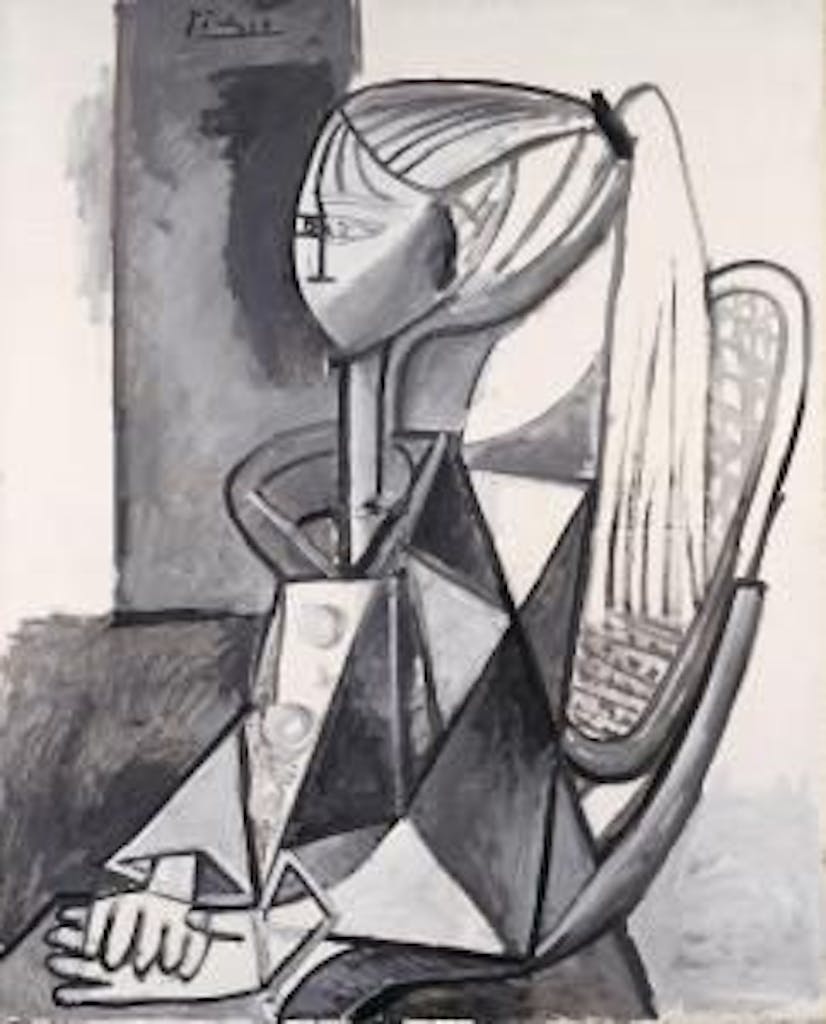
Portrait of Sylvette
(1954) Pablo Picasso
McNay Art Museum
San Antonio
“Youth, beauty, and a distinctive ponytail attracted Picasso to Sylvette, a girl of nineteen who met the famous artist in the south of France. A favorite among McNay docents and school groups alike, this version of Sylvette is one of forty portraits ranging from realistic to abstract.” Kate Carey, director of education
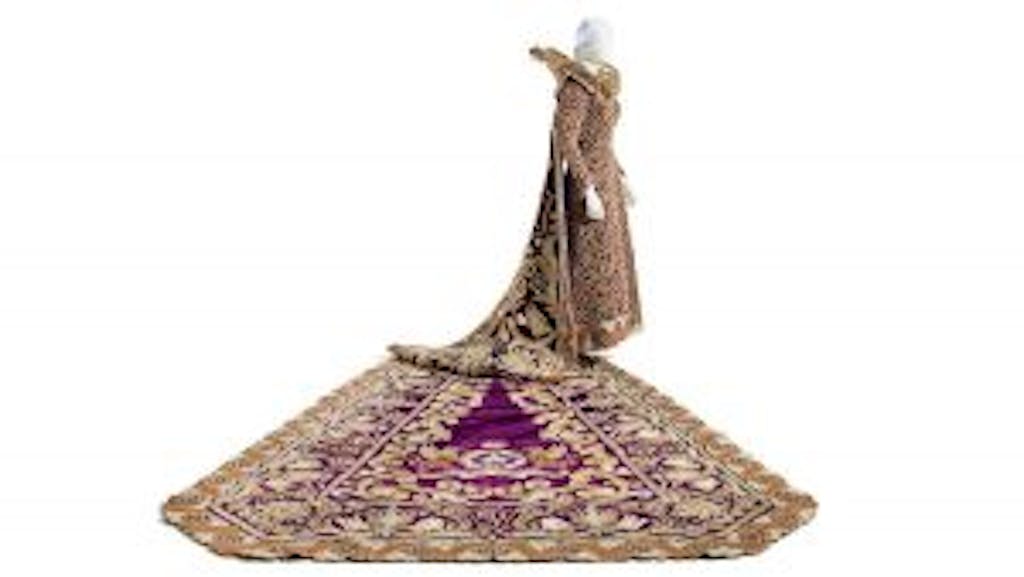
Fiesta Gown
(1999)
Witte Museum
San Antonio
“We’re the stewards of an extensive collection of gowns and costumes worn by members of the Order of the Alamo’s coronation court for Fiesta San Antonio. The oldest gown we have is from 1911, two years after the coronation began, and through the dresses you can trace the generations of women—the daughters, mothers, grandmothers, and even great-grandmothers—who have been queens and princesses and duchesses of the court. Each year, local dressmakers have the task of making these elaborate, fanciful gowns and trains. It’s an important cottage industry that has grown up around this community event, and there are now multiple generations of dressmakers as well.” Amy Fulkerson, chief curator
Three’s a Trend
(from left) Parvati (c. 11th century), Museum of Fine Arts, Houston
Yogini (c. 10th–11th century), San Antonio Museum of Art
D’mba headdress (c. late 19th–early 20th century), Dallas Museum of Art
Who says it’s a man’s world? Not one but three revered female figures were singled out as exemplars of community. Two Hindu deities made the cut: Parvati, the first student of yoga and the goddess of marriage and family, and a nameless yogini of fine detail (note her wrinkled lips), who likely guarded her community’s temple. And there’s also a headdress representing D’mba, the universal mother of Guinea’s Baga people, who presided over each agricultural and human life cycle.
Wave

(2002) Santiago Calatrava
Meadows Museum
Dallas
“Since Wave’s inauguration as the first large-scale work by Santiago Calatrava to be installed in the U.S., the artist has become a favorite son of Dallas, receiving an honorary degree from SMU and designing its two signature bridges over the Trinity River. Standing at the entrance to the university, Wave is one of the most well-known and photographed landmarks on campus.” Nicole Atzbach, curator
Ellie May, Columbian Mammoth from Ellis County, Texas
Perot Museum of Nature and Science
Dallas
“The discovery of this young female mammoth generated great excitement in southern Ellis County when she was found, with large crews assisting in the early stages of her excavation. When she was donated to the Perot Museum the entire north Texas region seemed to ‘adopt’ her, with attention generated by live EarthCam feeds from the dig, media frequenting the site, and even local schools bussing in to see the skeleton in the ground and hear the tale of the mammoth and the bygone time in which she lived. Her name came from being discovered in Ellis County during the month of May.” Ron Tykoski, director of paleontology lab
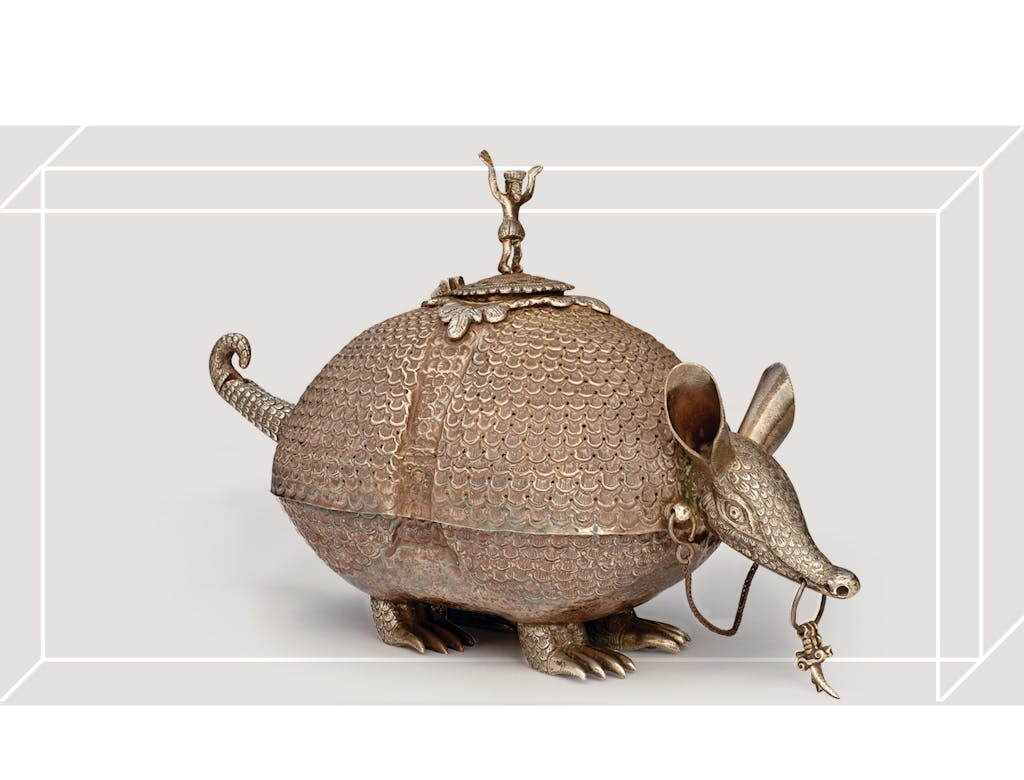
Craft
Whether fashioned from clay or marble or fabric—or even facial expressions—the works singled out here elevate the otherwise ordinary into new and startling configurations. They speak of excellence, underscoring a common theme: that the act of creation is as much about skill as imagination.
Robert De Niro makeup test photos

(c. 1974)
Harry Ransom Center
Austin
“One of De Niro’s earliest successes was his portrayal of the young Vito Corleone in The Godfather II. These photographs were likely taken before filming as hair and makeup test shots. Marlon Brando had originated the role as a much older man in The Godfather two years earlier, and De Niro incorporated parts of Brando’s performance—the high voice, puffy cheeks, mannerisms—into his own. So here we see not only two intertwined timeless performances but also the passing on of a truly American tradition of acting and De Niro taking his place among the great actors of his generation.” Steve Wilson, curator of film (Editor’s note: the photos are not on display but you can request to see them.)
Ceramic figurine, Maya
(c. 15th century)
Houston Museum of Natural Science
“Figurines like these were left as gifts in Maya burials. Quite often they represented the deceased, illustrating the position they may have held in their community. The small size of this figurine bespeaks the high skill level of the artist who made it.” Dirk Van Tuerenhout, curator of anthropology
Goat
(c. 1930–1931) John Bernard Flannagan
Amon Carter Museum of American Art
Fort Worth
“For Flannagan, stone was a living substance, possessing the character of even the most delicate creatures. Although self-taught, he was a consummate craftsman who directly carved this kid goat out of granite with only a chisel, creating a work that was modern for its time but also reminiscent of ancient devotional objects.” Shirley Reece-Hughes, curator of paintings and sculpture
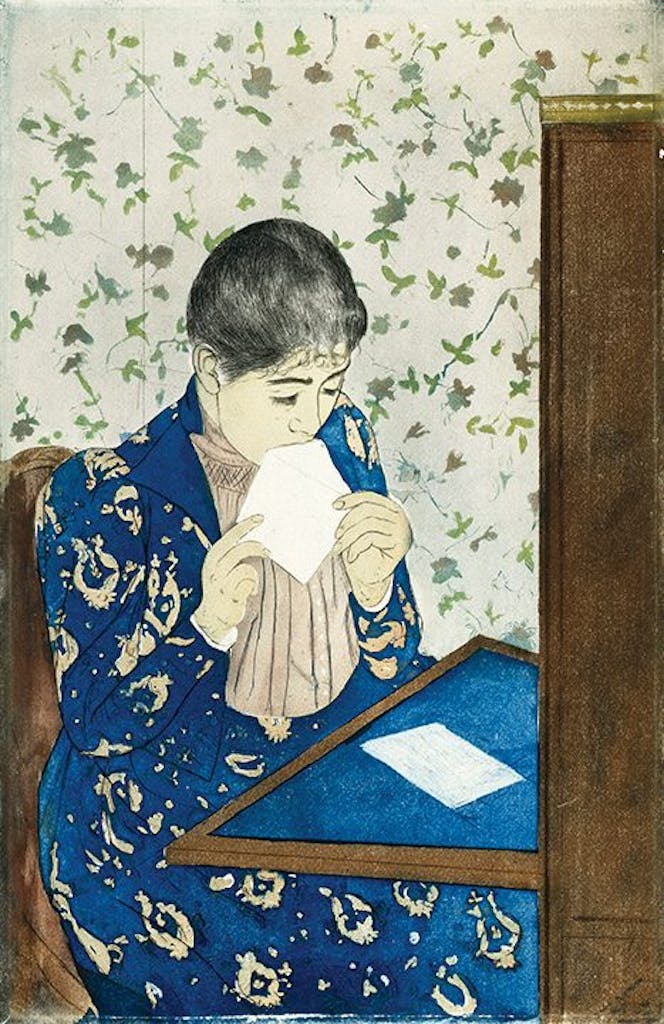
The Letter
(c. 1891) Mary Cassatt
McNay Art Museum
San Antonio
“The McNay is one of only a few museums in the world to have a complete set of the ten color aquatints Cassatt created in Paris in the winter of 1890 to 1891. In this, the most famous image of the suite, Cassatt combines the color palette of Japanese woodblock prints, a non-Western perspective, and a patterning that flattens the image.” Kate Carey, director of education
Marble Disk with Bust Portrait
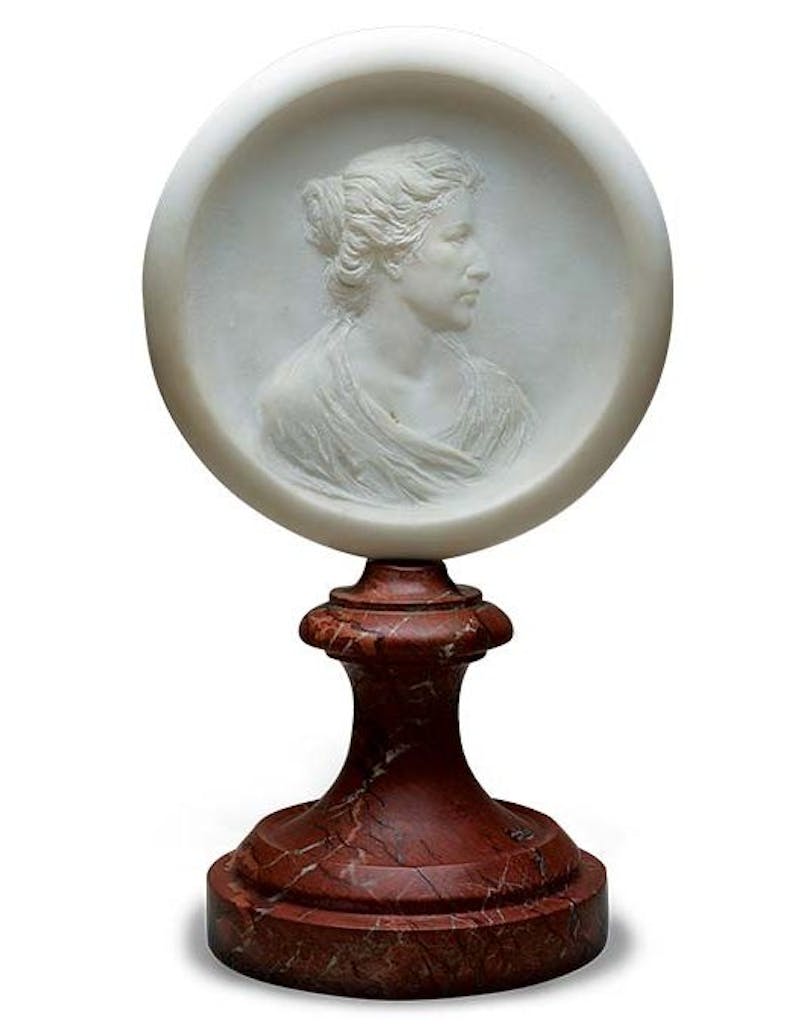
(1902) Elisabet Ney
The Bryan Museum
Galveston
“There’s a luminescent delicacy to this piece, balanced by the strength of the marble, that embodies the spirit of its creator. Despite the protestations of her parents and the scorn of much of European and North American society, Ney took up a craft reserved for men and created some of the greatest sculptures known on both continents. She also brought culture to Austin when she built her studio, Formosa, in what is now Hyde Park and molded some of the world’s most beautiful statues there. As she herself put it in 1886: ‘From quite early my life has been a protest against the subjection to which women were doomed from their birth; against the scanty allowance for brain development marked out for us.’ ” Andrew Gustafson, former curator
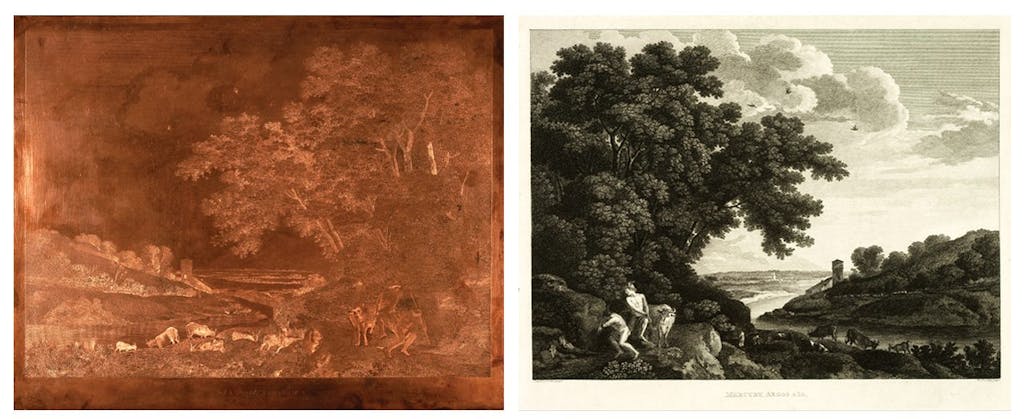
Mercury, Argus, and Io copper plate
Mercury, Argus, and Io etching and engraving
(1760 plate and 20th-century print)
William Woollett
Blanton Museum of Art
Austin
“Prints make up more than three quarters of the Blanton’s collection, and visitors are able to examine printmaking tools—copper plates, lithography stones, burins, and woodcut carving tools—that help explain why prints look the way they do. This pairing, of an original engraved plate and a print pulled from the plate, illustrates how the image flips, a phenomenon that might be hard to visualize otherwise.” Kristin Holder, print room specialist (Editor’s note: the Blanton’s upstairs galleries are closed for renovation but will reopen February 12, 2017.)
Early Hominids
(2016) Elisabeth Daynes
Perot Museum of Nature and Science
Dallas
“Added to the museum’s Being Human Hall in 2016, the incredibly lifelike hominin reconstructions by renowned artist Elisabeth Daynes have many visitors wondering if sculptures are living creatures ready to walk out of the exhibit. Daynes’s work with paleoanthropologists and her attention to fine details have won the hyperrealistic reconstructions multiple awards as well as provide our visitors with unique selfie opportunities.” Mike Spiewak, senior director of exhibits
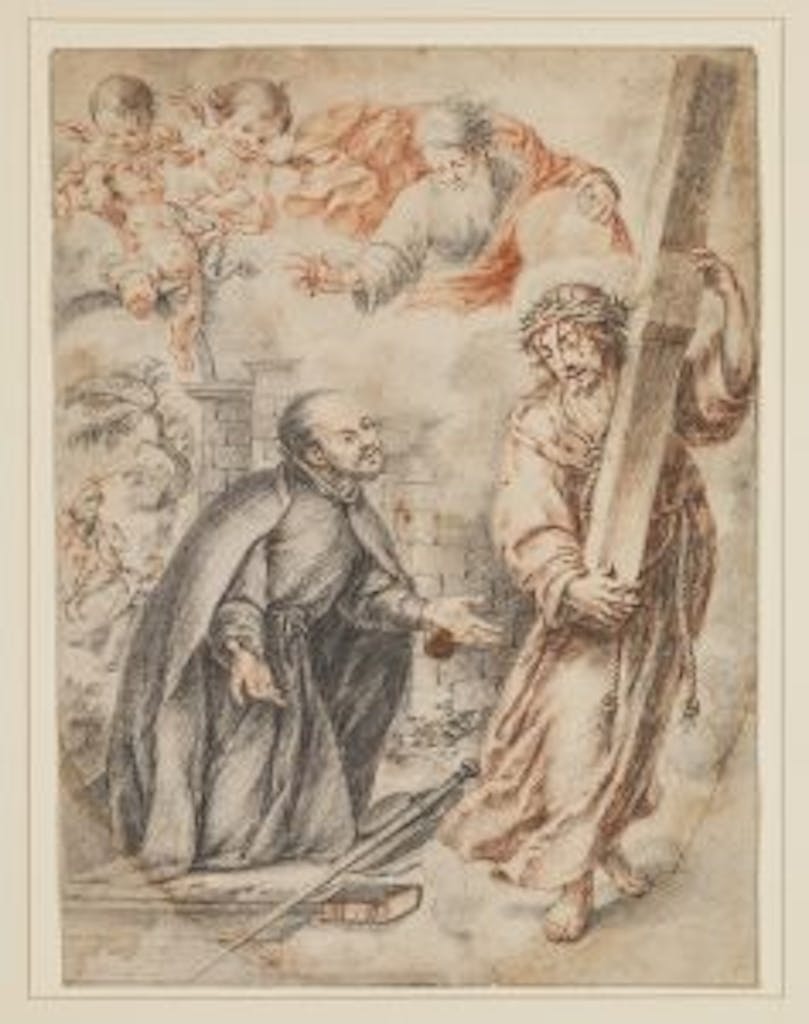
The Apparition of Christ to St. Ignatius on His Way to Rome
(c. 1662) Juan de Valdés Leal
Meadows Museum
Dallas
“One of the very few known drawings by Valdés Leal (and one of only two in U.S. collections), this exceptional work is key to understanding the artist’s process; its composition inspired by an earlier etching, it served as a preparatory drawing for one of a series of paintings depicting scenes from the life of St. Ignatius of Loyola.” Nicole Atzbach, curator
Censer Stand with the Head of a Supernatural Being with a Kan Cross
(c. 690–720 AD)
Kimbell Art Museum
Fort Worth
“The Maya created sophisticated works in a variety of media, but they were most prolific and creative using clay. This ceramic is an exceptional illustration of their mastery of this humble material. Monumental in scale and rich in iconographic detail, it’s mesmerizing and mysterious.” Marion Oettinger Jr., curator of Latin American art
Altar Portrait of an Oba, Edo peoples
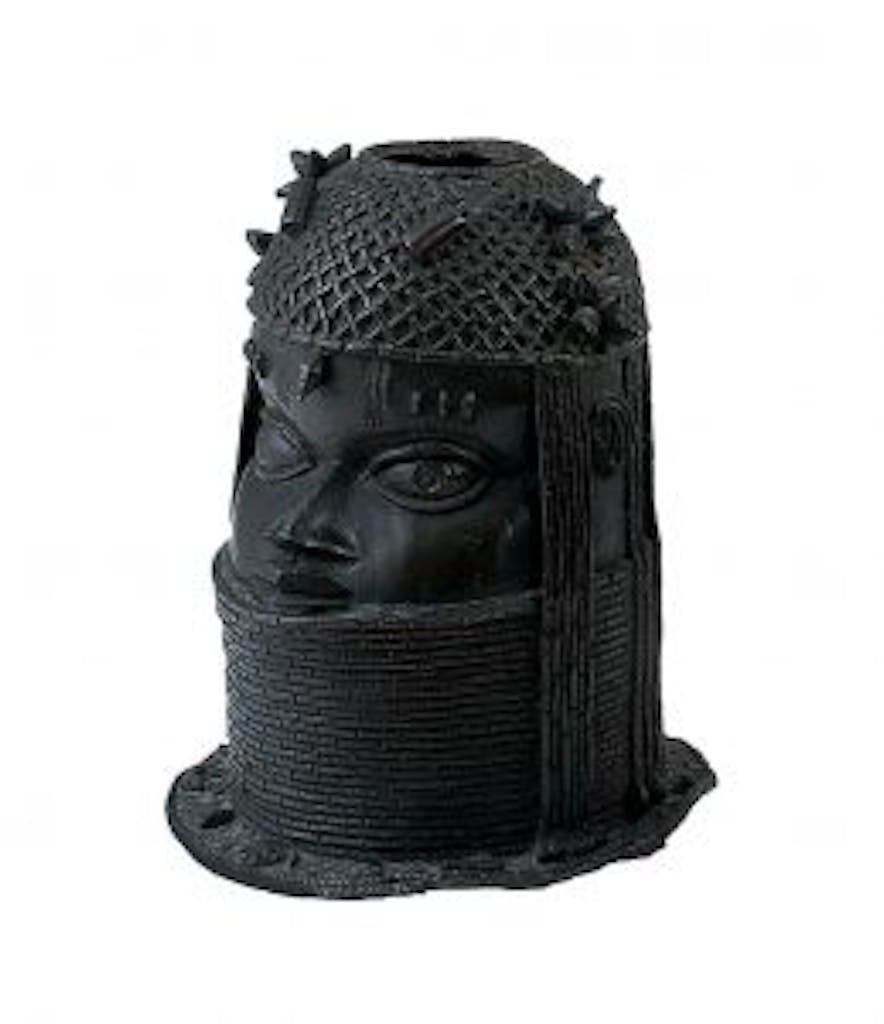
(c. 18th century)
Menil Collection
Houston
“Depictions of an Oba or divine ruler of the Kingdom of Benin exemplify the sophisticated lost-wax (cire-perdue) technique of the Iguneronmwon, the royal bronze artisan guild, to cast highly detailed representations of authority and prestige. Originally part of an elaborate altar, which included carved elephant tusks and several other cast copper-alloy elements, the portrait illustrates an Oba’s vividly red, coral-beaded regalia and crown that connected him to Olokun, the god of waters, and wealth from expanding trade with European kingdoms since the fifteenth century.” Paul Davis, curator of collections
The Dundas Sofa
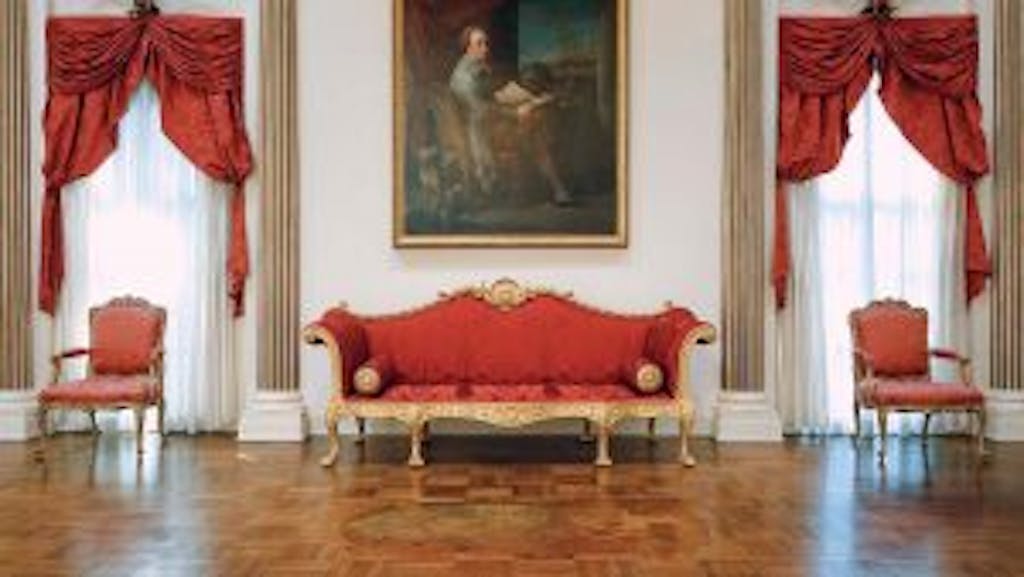
(1765) Robert Adam
Museum of Fine Arts, Houston
“This neoclassical sofa was commissioned in 1764 by Sir Lawrence Dundas, a Scottish politician, for the principal drawing room of his London mansion; it is a very rare example of the only known design collaboration to have happened between the architect Robert Adam and the furniture maker Thomas Chippendale, two of the most important British artists of the eighteenth century. The sofa was produced when rococo was in vogue, but you can also see in its design a taste for the antique, a style decision influenced by the era’s discoveries at places like Herculaneum and Pompeii. The waving line of beauty, combined with well-observed classical ornament, results in a sort of design perfection.” Christine Gervais, director of Rienzi, the MFAH house museum for European decorative arts
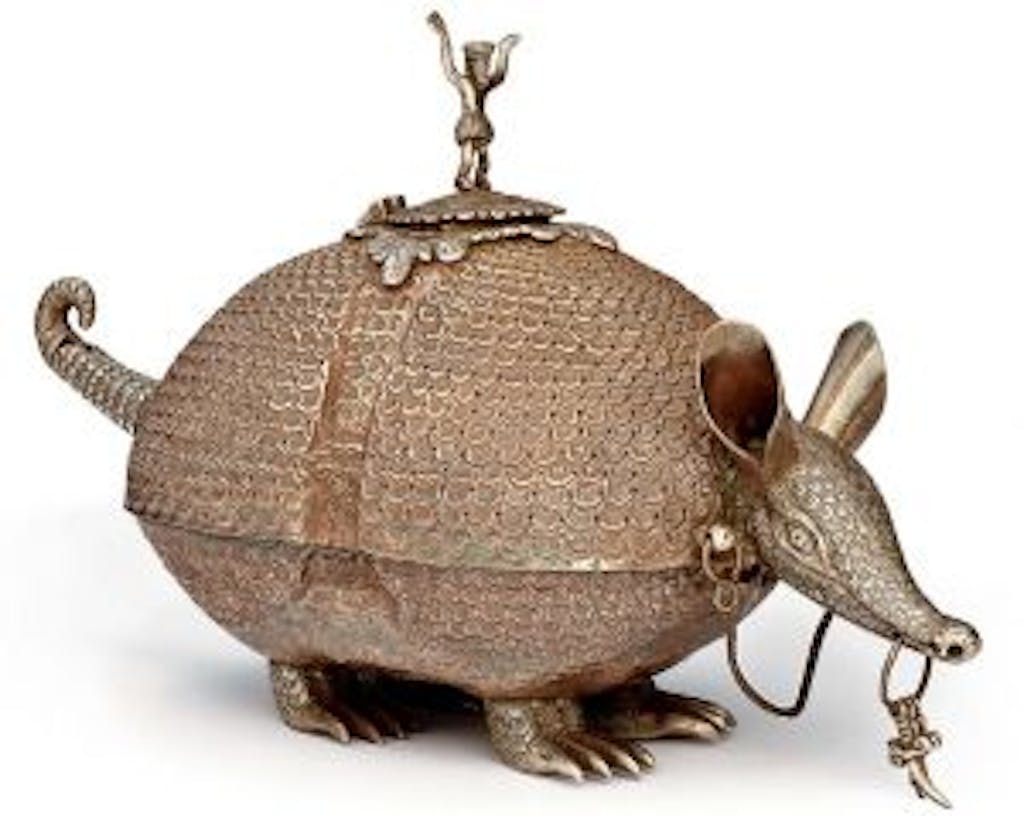
Armadillo incense burner
(c. 1800)
San Antonio Museum of Art
“This elegant sahumador, or incense burner, is an excellent example of fine Peruvian silverwork of the late eighteenth and early nineteenth centuries. Upper-class Peruvian families would have used an object like this to sweeten the atmosphere of their homes and haciendas.” Marion Oettinger Jr., curator of Latin American art
The Wittgenstein Vitrine
(1908)
Dallas Museum of Art
“Designed by Wiener Werkstätte (Vienna Workshops) member Carl Otto Czeschka (1878-1960) and executed by a team of metalsmiths and other craftsmen, the monumental Wittgenstein Vitrine, or display cabinet, epitomizes the ideal of handcraftsmanship. Constructed of solid silver and encrusted with semi-precious stones, the vitrine expresses the Werkstätte’s ultimate embrace of an opulent richly ornamental and symbolic aesthetic shared by concurrent design movements labeled Art Nouveau (New Art) in France and Belgium, Stile Floreal (Floral Style) in Italy, and Jugendstil (Youth Style) in Germany and Austria.” Samantha Robinson, interim assistant curator of decorative arts and design
Backyard

(2014) Thomas Demand
Modern Art Museum of Fort Worth
“Craft is an essential layer in the work of Thomas Demand, whose photograph Backyard depicts a realistic view of Boston Marathon bomber Tamerlan Tsarnaev’s courtyard, yet the image actually depicts an intricate, life-size model made of construction paper and cardboard. After he photographs his handcrafted scene, he destroys the model—erasing his laborious process, while letting it live on in print.” Alison Hearst, assistant curator
Temporary Works
Of course, Texas has more than a few non-permanent exhibits that are also worth a visit. We asked Rainey Knudson, the founder of online visual arts magazine Glasstire to pick five you must see now.
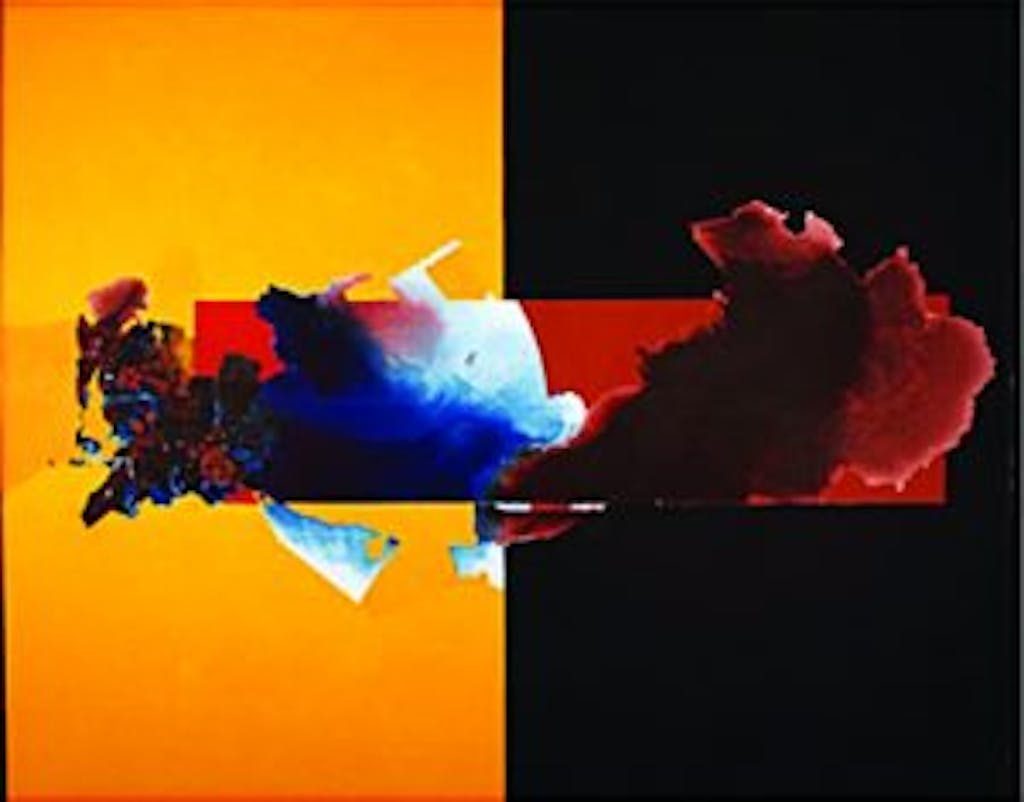
“The Color of Being/El Color del Ser: Dorothy Hood (1918–2000)”
Art Museum of South Texas
Corpus Christi
Through January 8, 2017
Dorothy Hood is arguably the most important Texas Modernist painter, although she’s less well-known that she should be. Hopefully this show will rectify that. Don’t miss her stunning collages.
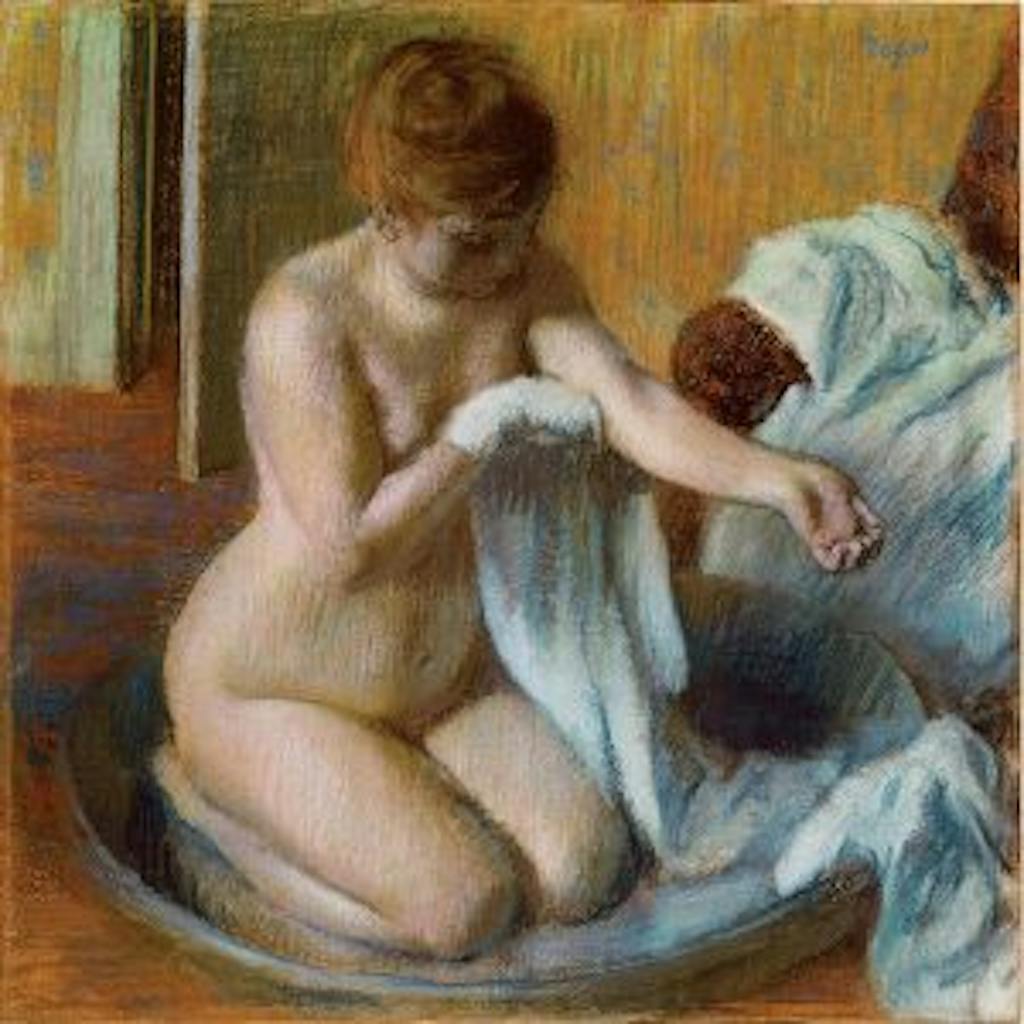
“Degas: A New Vision”
Museum of Fine Arts, Houston
Through January 16, 2017
Degas has been somewhat overlooked the past few decades compared with his Impressionist contemporaries, which is a disservice to this consummately skilled painter. Go for his pretty ballerinas, stay for his incisive social commentary.
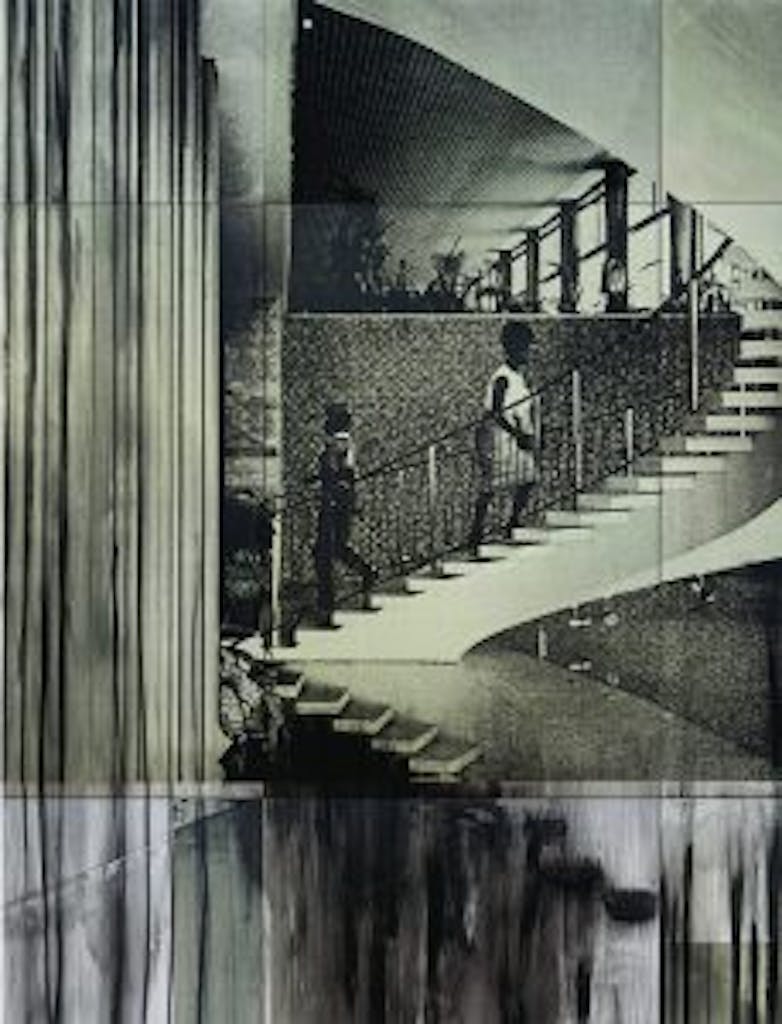
“FOCUS: Lorna Simpson”
Modern Art Museum of Fort Worth
November 19, 2016–January 15, 2017
Lorna Simpson has been making sharp, elegant works about racial and sexual identity for decades. These paintings feature images of women drawn from Jet and Ebony magazines from the fifties to the seventies.
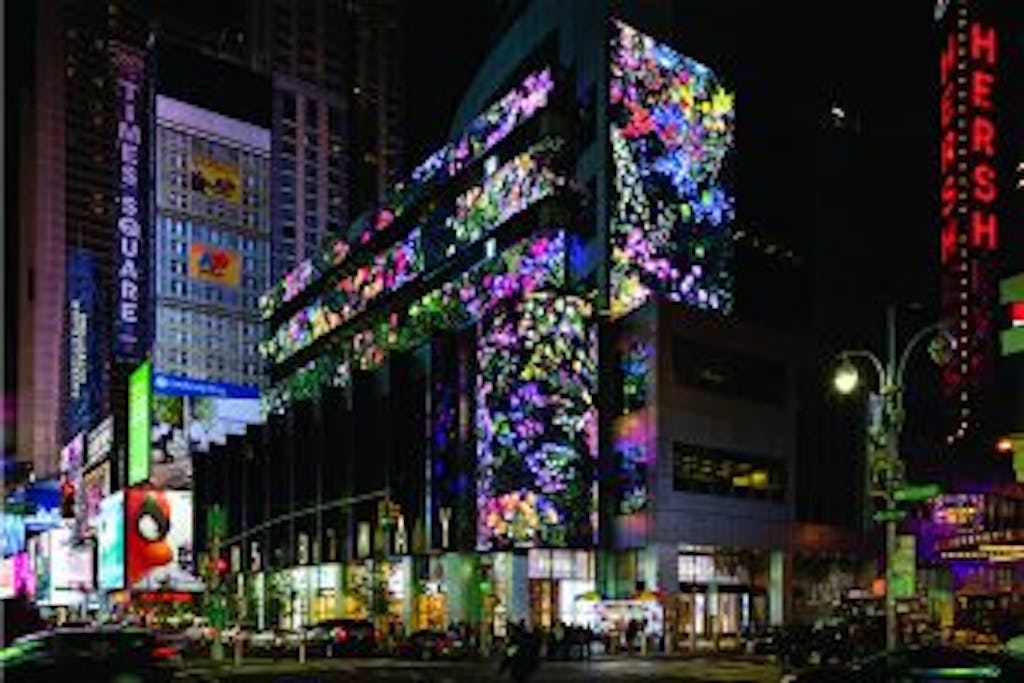
“Jennifer Steinkamp: Botanic 3”
McNay Art Museum
San Antonio
Through January 8, 2017
It’s not often you get pretty flowers and chaos theory in the same artwork. Steinkamp’s videos are mesmerizing feats of computational engineering that take the traditional botanic picture into the twenty-first century.
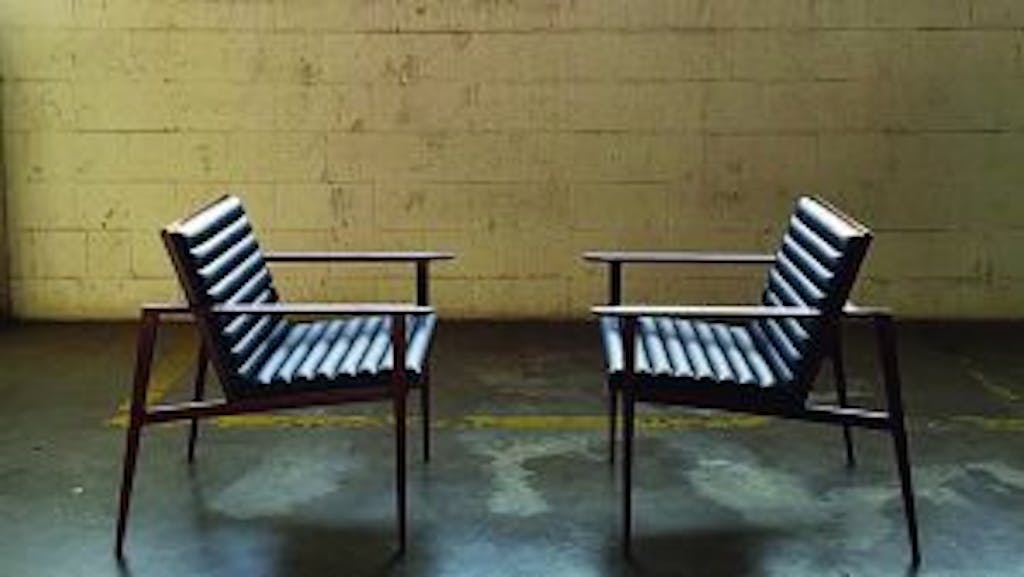
“Dan Phillips: Blackest Cloud”
Old Jail Art Center
Albany
Through February 11, 2017
Dan Phillips may be the finest cabinetmaker in Texas, and his exquisite furniture will be the treasured antiques of the future. His works on paper are great too. Both will be on view in this show at the incomparably wonderful Old Jail.
Index
Austin
Blanton Museum of Art
- Austin, Texas (Town Lake) (2016), Nina Katchadourian
- Mercury, Argus, and Io copper plate and Mercury, Argus, and Io etching and engraving (1760 plate and 20th-century print), William Woollett
- Narcisos [Narcissi] (c. 1994–1995), Oscar Muñoz
- Personification of Astrology (c. 1650–1655), Guercino
- Synecdoche (1998), Byron Kim
Harry Ransom Center
- Gutenberg Bible (1454 or 1455)
- Indoctrination Division, Air Training Command, Lackland Air Base, San Antonio Texas, July 19, 1947, Eugene Omar Goldbeck
- Robert De Niro makeup test photos (c. 1974)
- Self-Portrait With Thorn Necklace and Hummingbird (1940), Frida Kahlo
- Tagged (From the series Immortality: The Remnants of the Vietnam/American War, 2005), Binh Danh
Canyon
Panhandle-Plains Historical Museum
- The O Roundup (1888), Frank Reaugh
- Sidesaddle (c. 1870)
- Standard windmill with two eclipse sections (c. 1906)
- T Anchor Ranch Headquarters and Blacksmith Shop (1877)
Dallas
Dallas Museum of Art
- Cathedral (1947), Jackson Pollock
- D’mba headdress (c. late 19th–early 20th century)
- Road to the Hills (c. 1918), Julian Onderdonk
- The Seine at Lavacourt (1880), Claude Monet
- The Wittgenstein Vitrine (1908)
Meadows Museum
- The Apparition of Christ to St. Ignatius on His Way to Rome (c. 1662), Juan de Valdés Leal
- L’homme poisson (1930), Salvador Dalí
- Portrait of Mariano Goya, the Artist’s Grandson (1827), Francisco José de Goya y Lucientes
- Sho (2007), Juame Plensa
- Wave (2002), Santiago Calatrava
Perot Museum
- Alamosaurus Skeleton Reconstruction
- Early Hominids (2016), Elisabeth Daynes
- Ellie May, Columbian Mammoth from Ellis County, Texas
- Texas Habitat Dioramas (1936)
- Thom Mayne building (2012)
Fort Worth
Amon Carter Museum of American Art
- Annie G. With Jockey (.031 Second), One Stride in 16 Phases (Right Lead), Time of Stride: .46 Second; Strides Per Mile: 233; Speed: 1 Mile in About 107 Seconds (c. 1887), Eadweard Muybridge
- A Dash for the Timber (1889), Frederic Remington
- Goat (c. 1930-1931), John Bernard Flannagan
- Lunar Landscape (c. 1959–1960), Louise Nevelson
- Swimming (1885), Thomas Eakins
Kimbell Art Museum
- The Cardsharps (c. 1595), Carvaggio
- Censer Stand with the Head of a Supernatural Being with a Kan Cross (c. 690–720 AD)
Modern Art Museum of Fort Worth
- Backyard (2014), Thomas Demand
- “FOCUS: Lorna Simpson” November 19, 2016–January 15, 2017
- Kingdom Day (2010), Mark Bradford
- Self-Portrait (1986), Andy Warhol
- Spiral City (2002), Melanie Smith
- Untitled (Sculptural Study, Two-part Standing Construction) (c. 1978/2007,) Fred Sandback
Galveston
The Bryan Museum
- The Battle of San Jacinto Diorama (2015)
- Colt Walker Six-shooter (1847)
- Davis Mountains (c. 1900s), Frank Reaugh
- Marble Disk with Bust Portrait (1902), Elisabet Ney
Houston
Houston Museum of Natural Science
- Blue Yoke Dress, Lakota Nation (c. late-19th century)
- Ceramic Figurine, Maya (c. 15th century)
- Headdress (c. 1900s), Pa’ikwené people, French Guiana and Brazil
- Jaguar Head (c. 1900s)
- Stone Money (c. 1800s)
The Menil Collection
- Altar Portrait of an Oba, Edo Peoples (c. 1700s)
- Little Race Riot, (1964) Andy Warhol
- Portrait Mask, Haida Peoples (c. early 1900s)
- Rift (1968/1982), Michael Heizer
- Untitled, (1957) Mark Rothko
Museum of Fine Arts, Houston
- Albero folgorato (Thunderstruck Tree) (2012), Giuseppe Penone
- The Bayou Bend Collection
- “Degas: A New Vision” Through January 16, 2017
- The Dundas Sofa (1765), Robert Adam
- The Light Inside (1999), James Turrell
- Parvati (c. 11th century)
San Antonio
McNay Art Museum
- Delfina Flores (1972), Diego Rivera
- Feathering the Cultural Nest (1986), John Alexander
- Horizontal Column of Five Squares, Excentric II (1994), George Rickey
- “Jennifer Steinkamp: Botanic 3”
- The Letter (c. 1891), Mary Cassatt
- Portrait of Sylvette (1954), Pablo Picasso
San Antonio Museum of Art
- Armadillo incense burner (c. 1800)
- Potrero Hill (1976), Wayne Thiebaud
- Standards and Emblems of the Battle of Sekigahara (c. mid-17th century)
- Stater of Athens (c. 296 BCE)
- Yogini (c. 10th–11th century)
Witte Museum
- Agave Knife (c. 1500–2000 BCE)
- Fiesta Gown (1999)
- Keys to the Alamo (1848)


